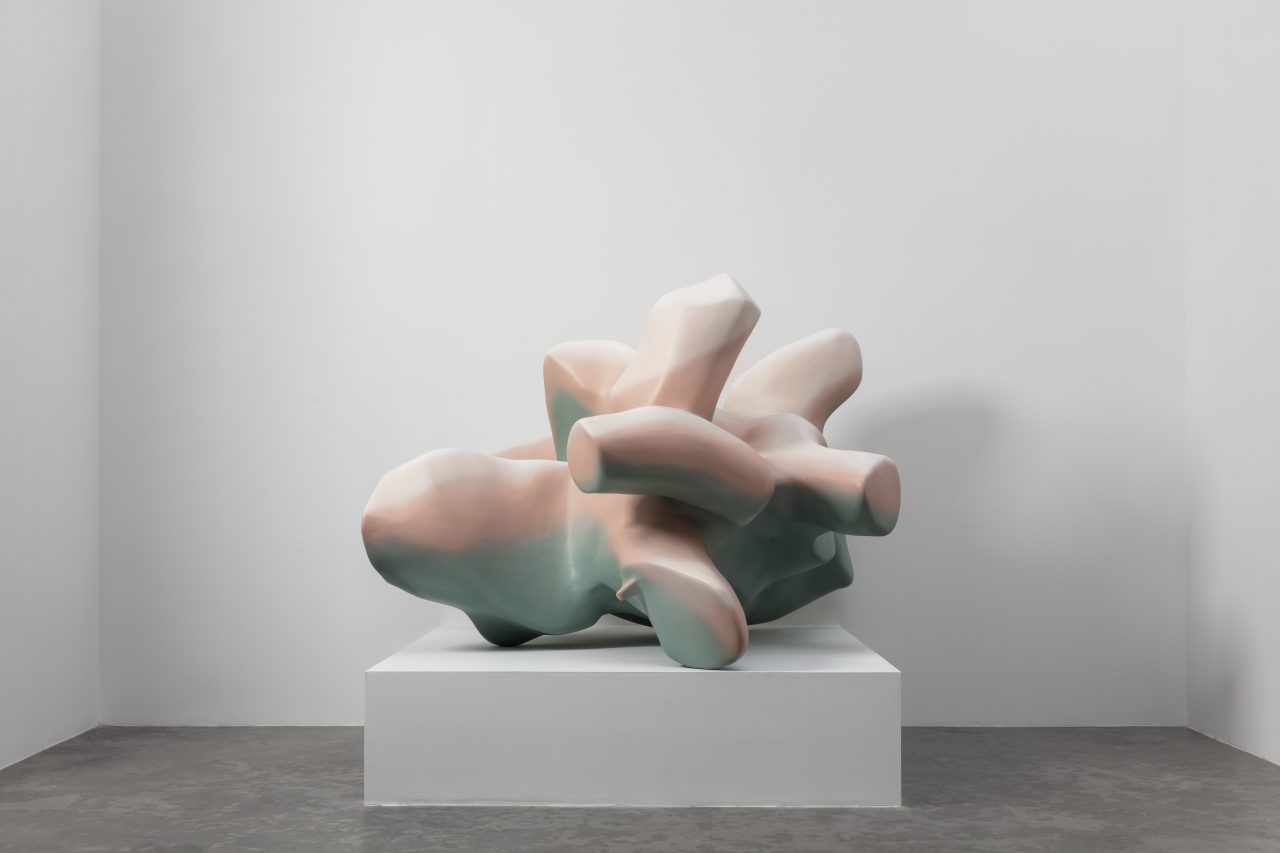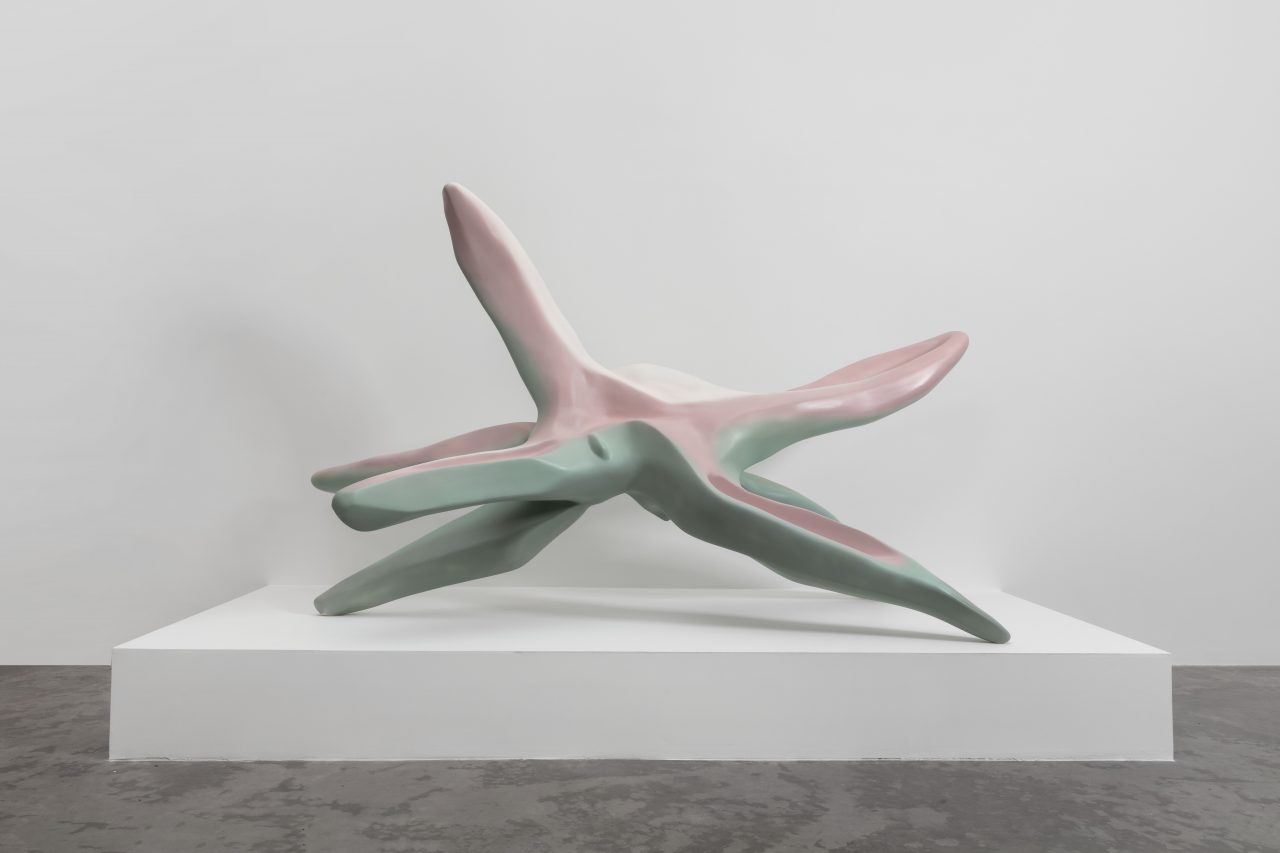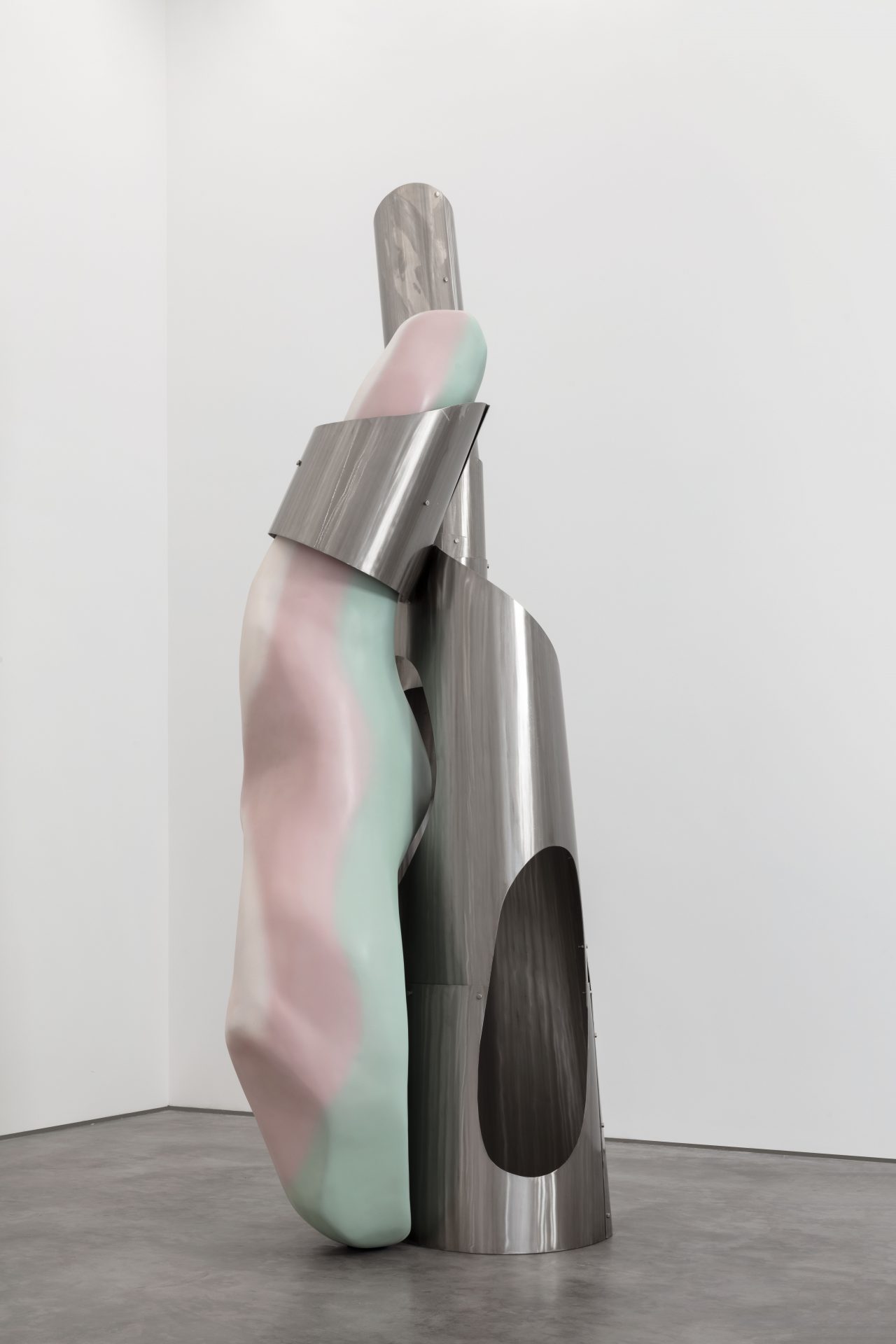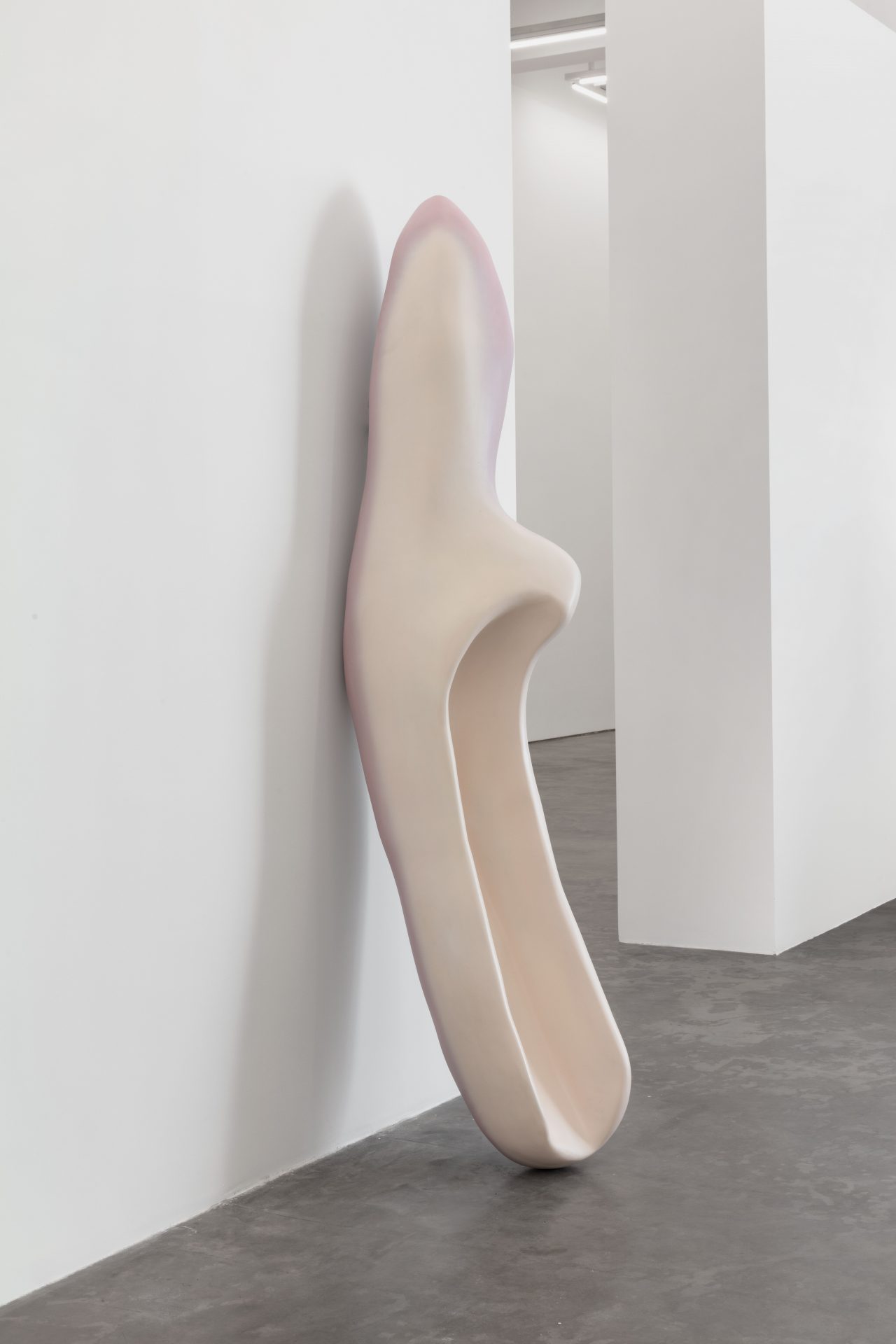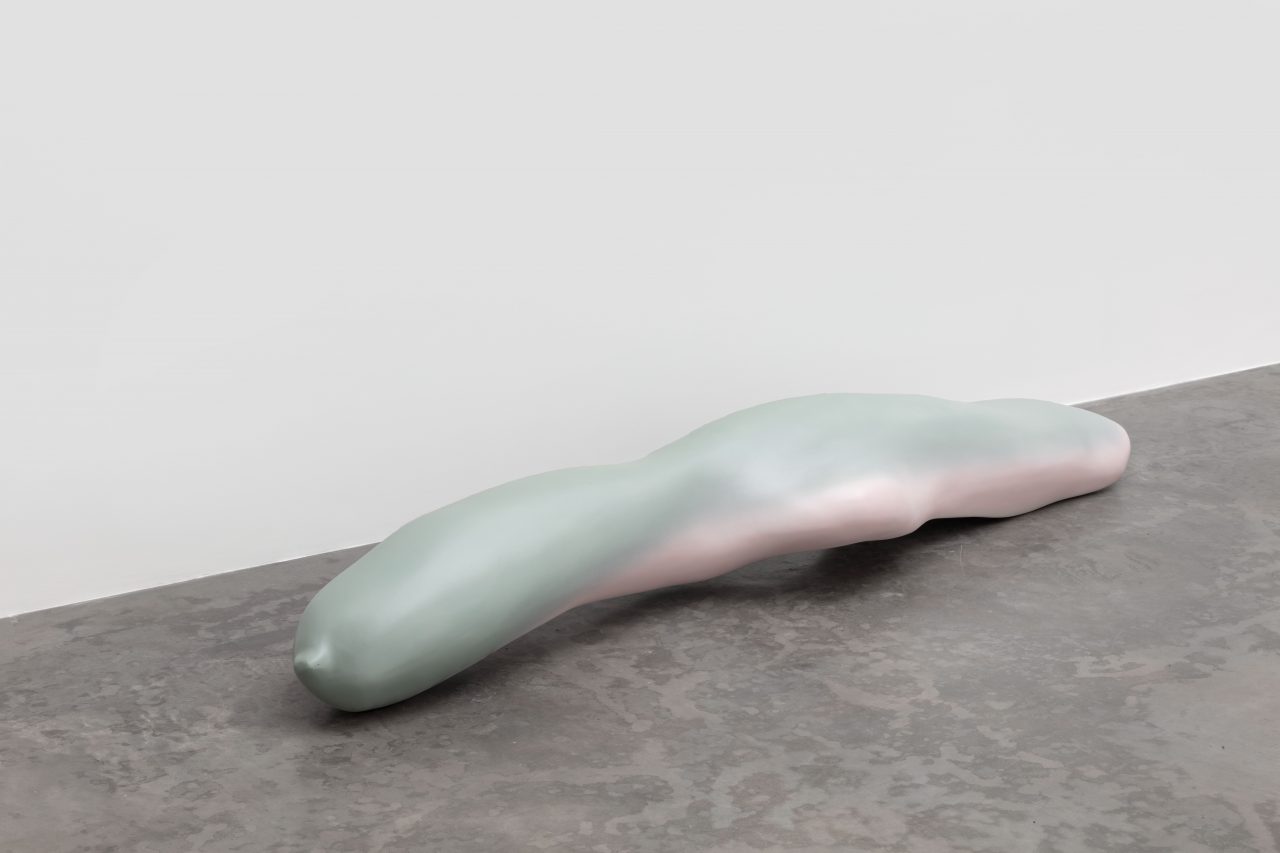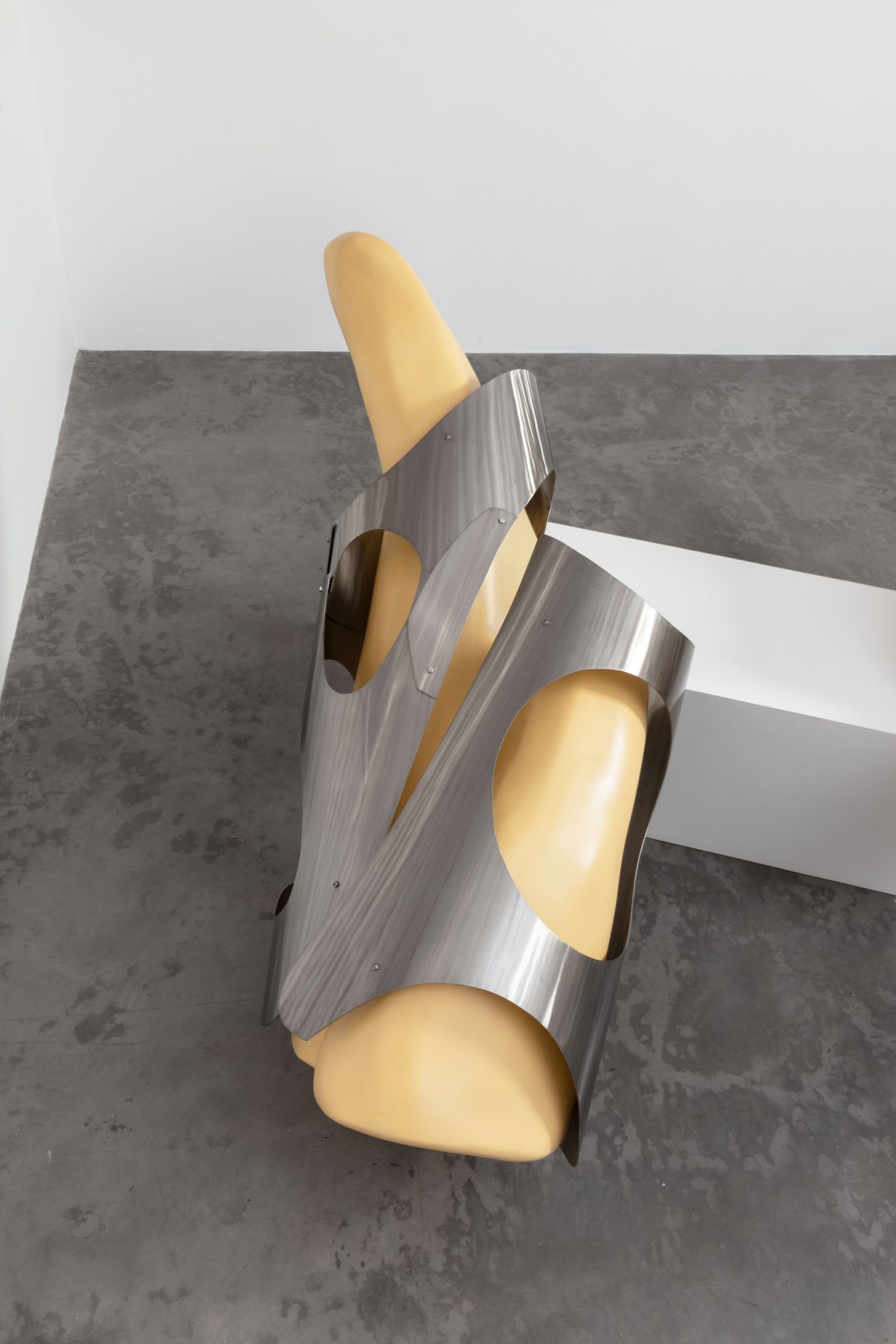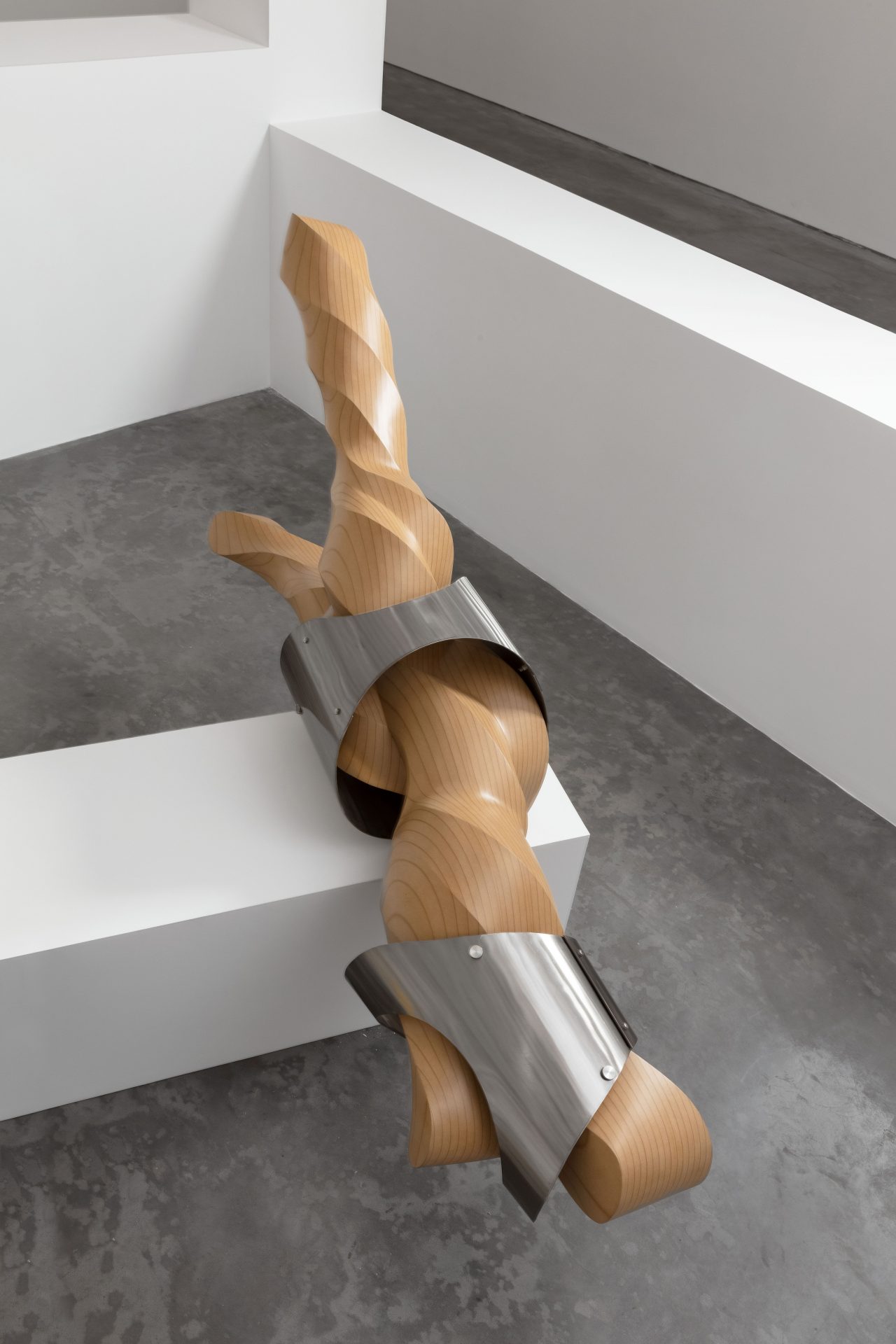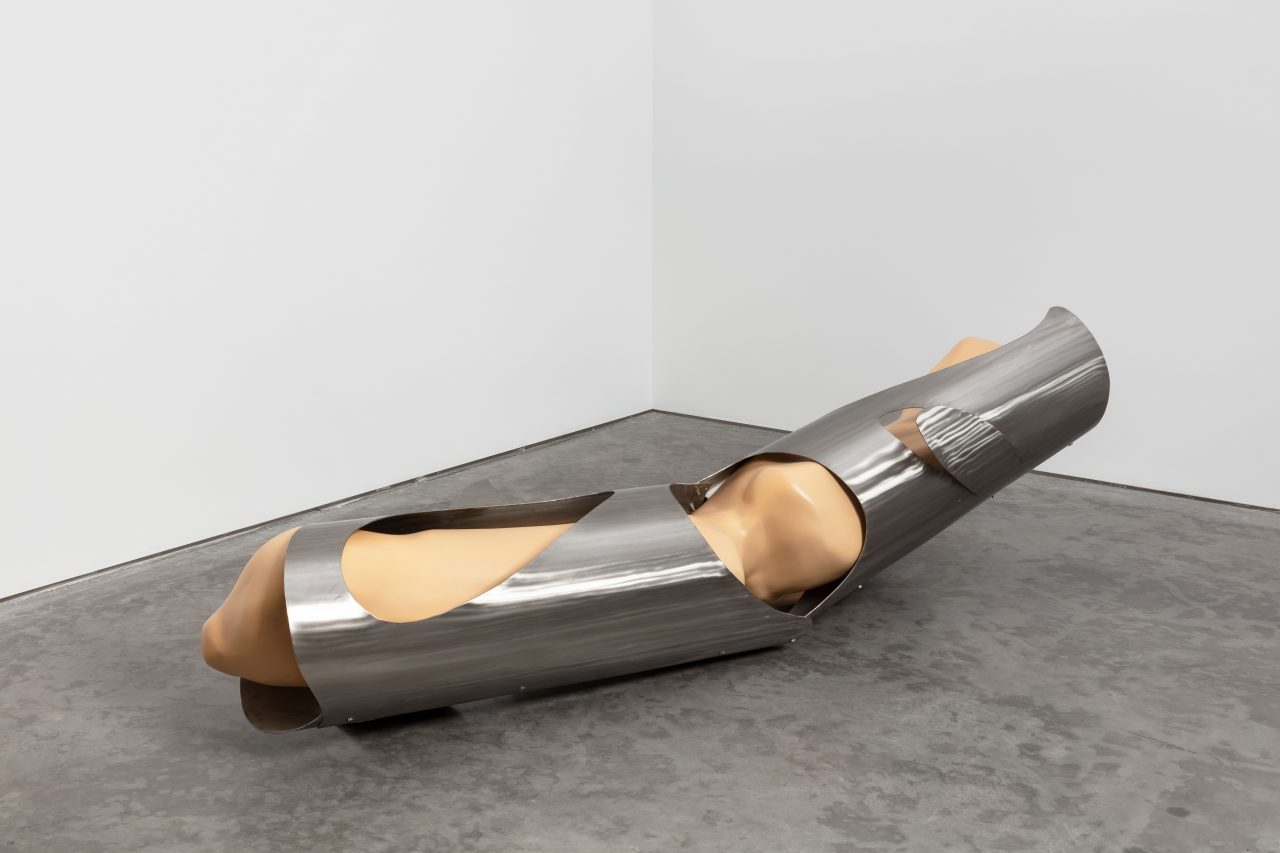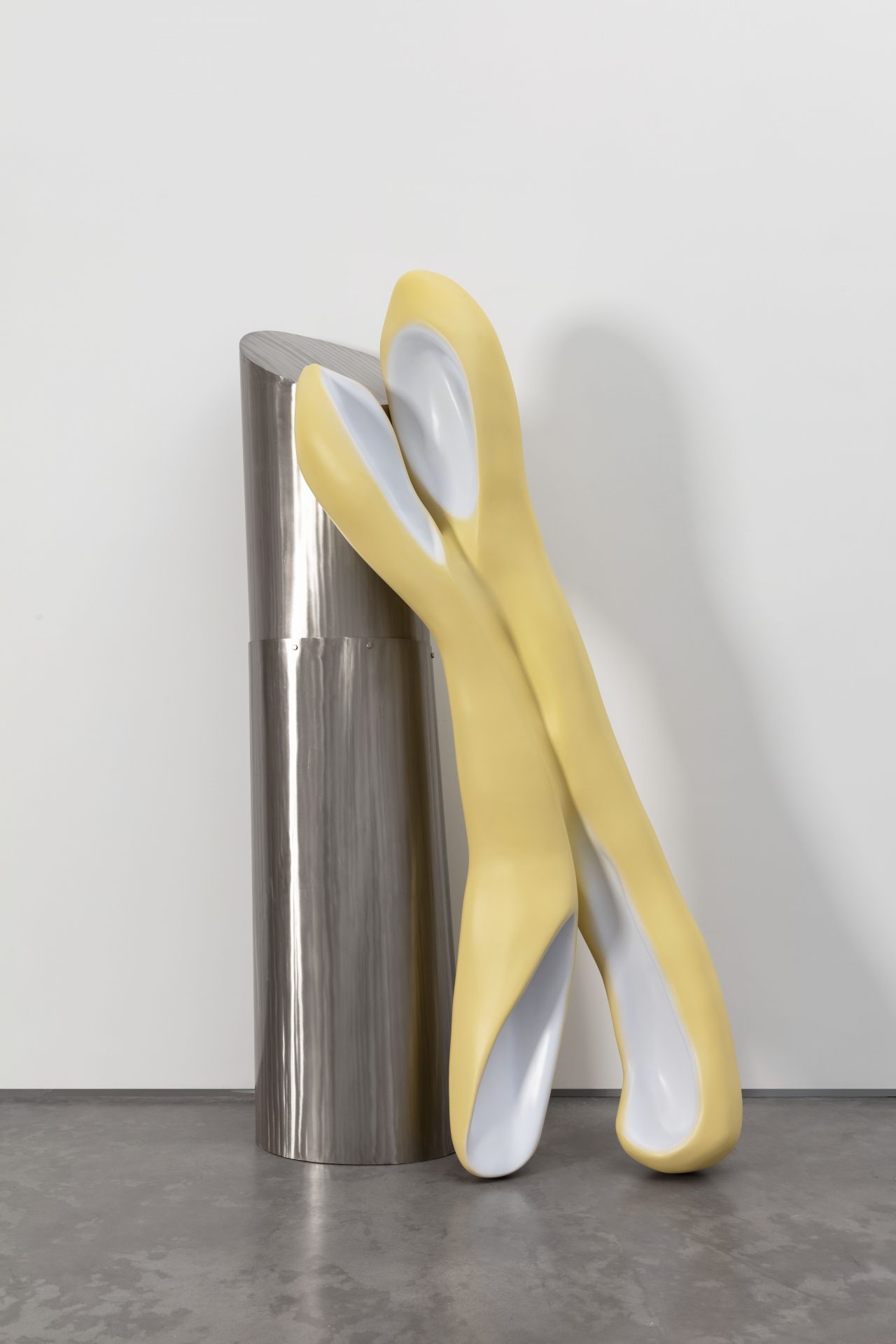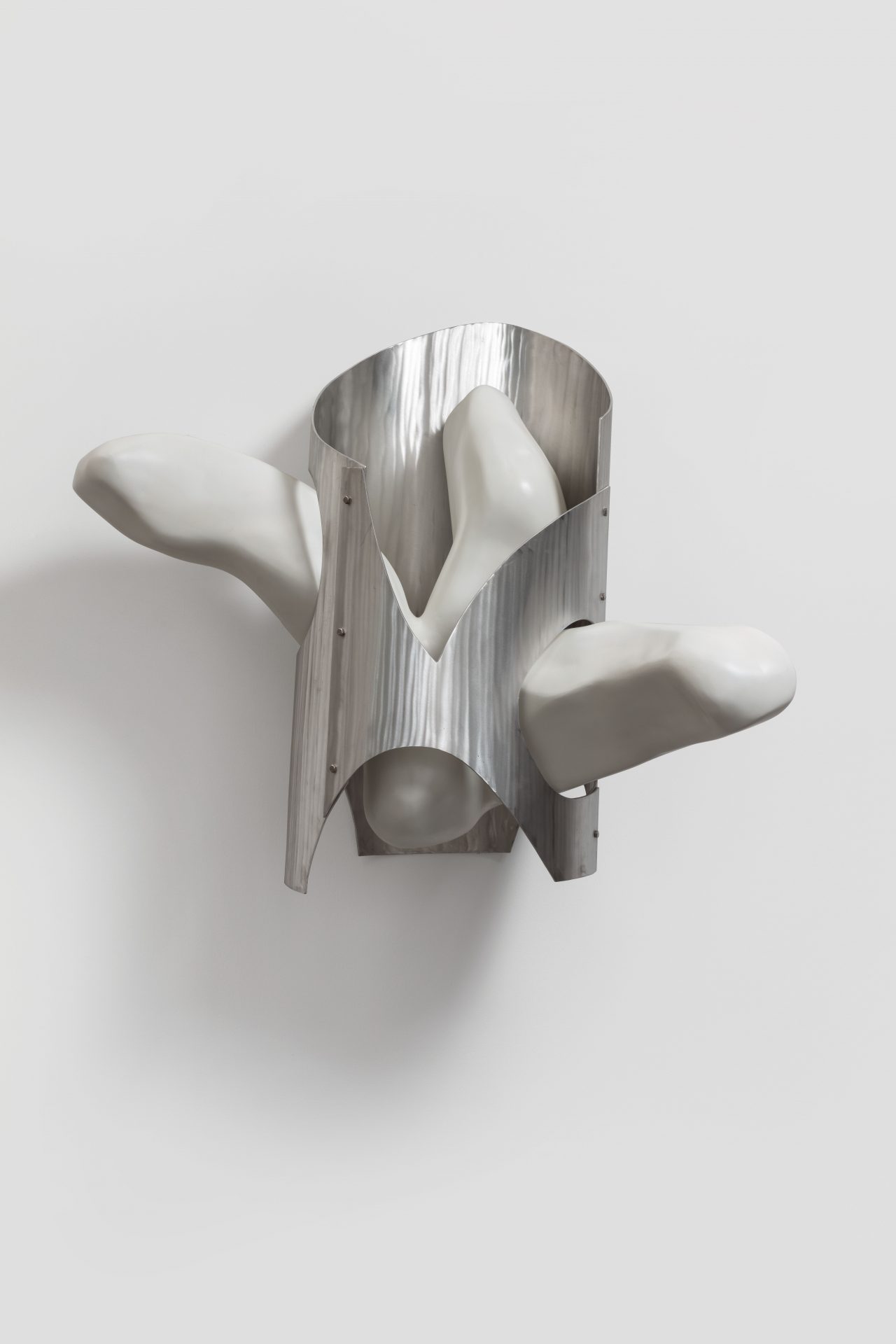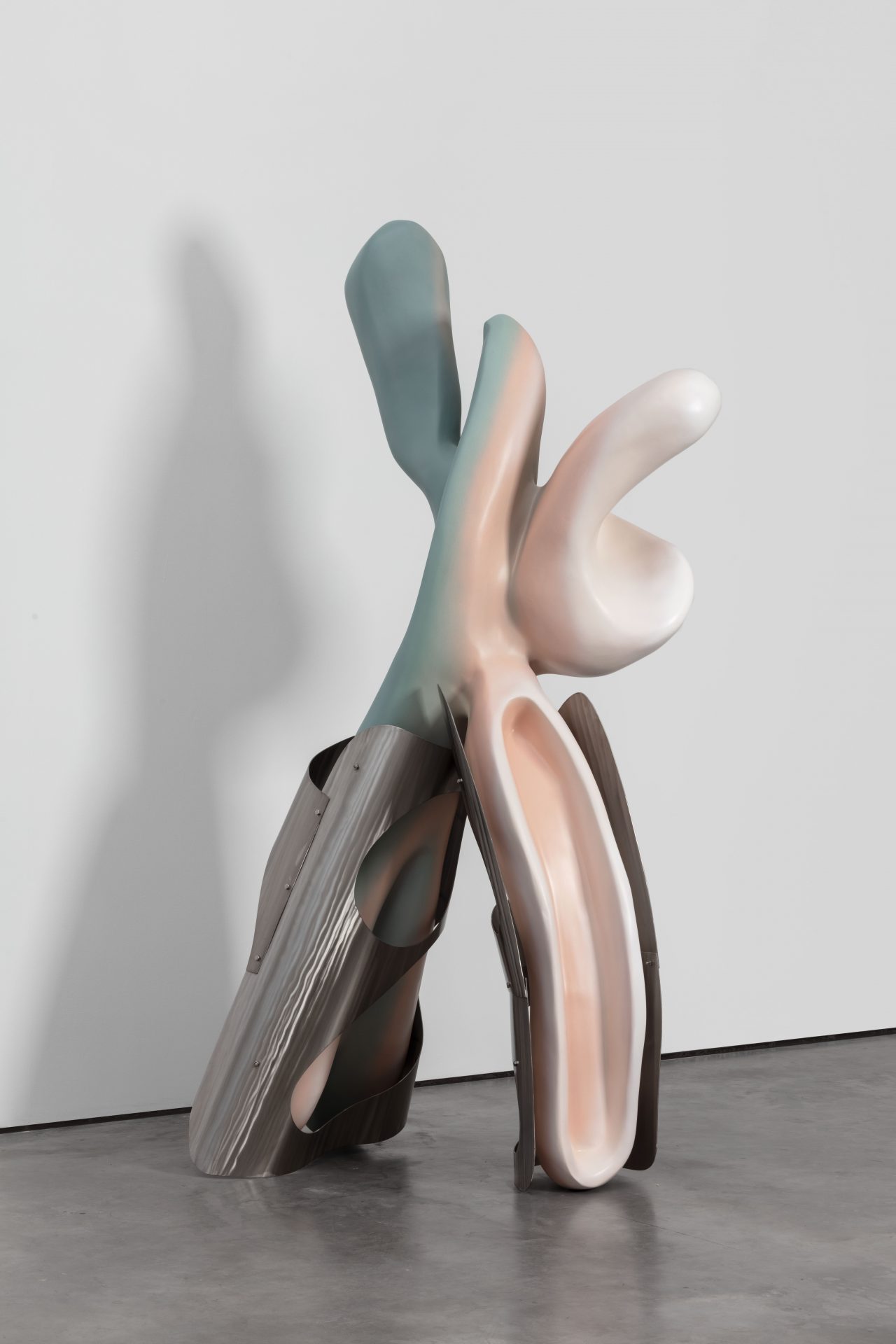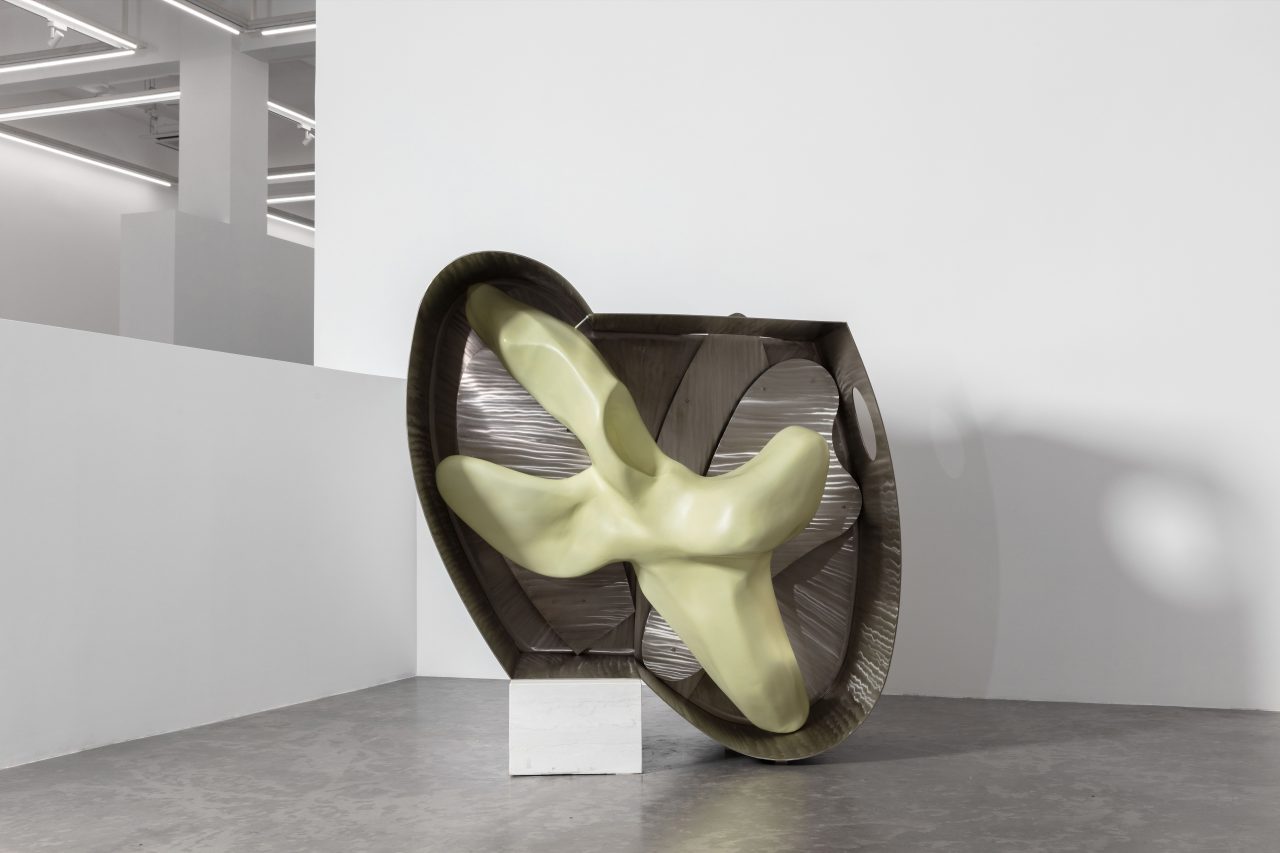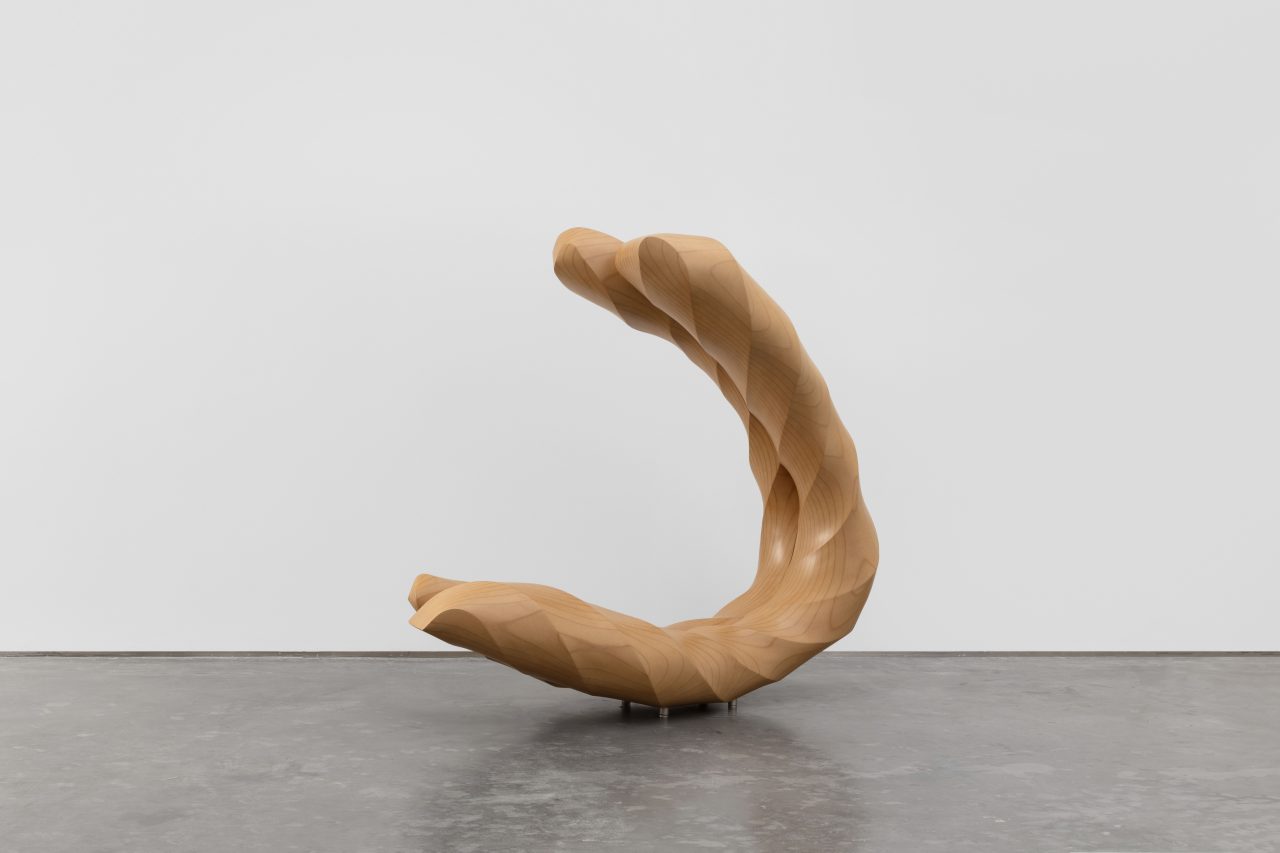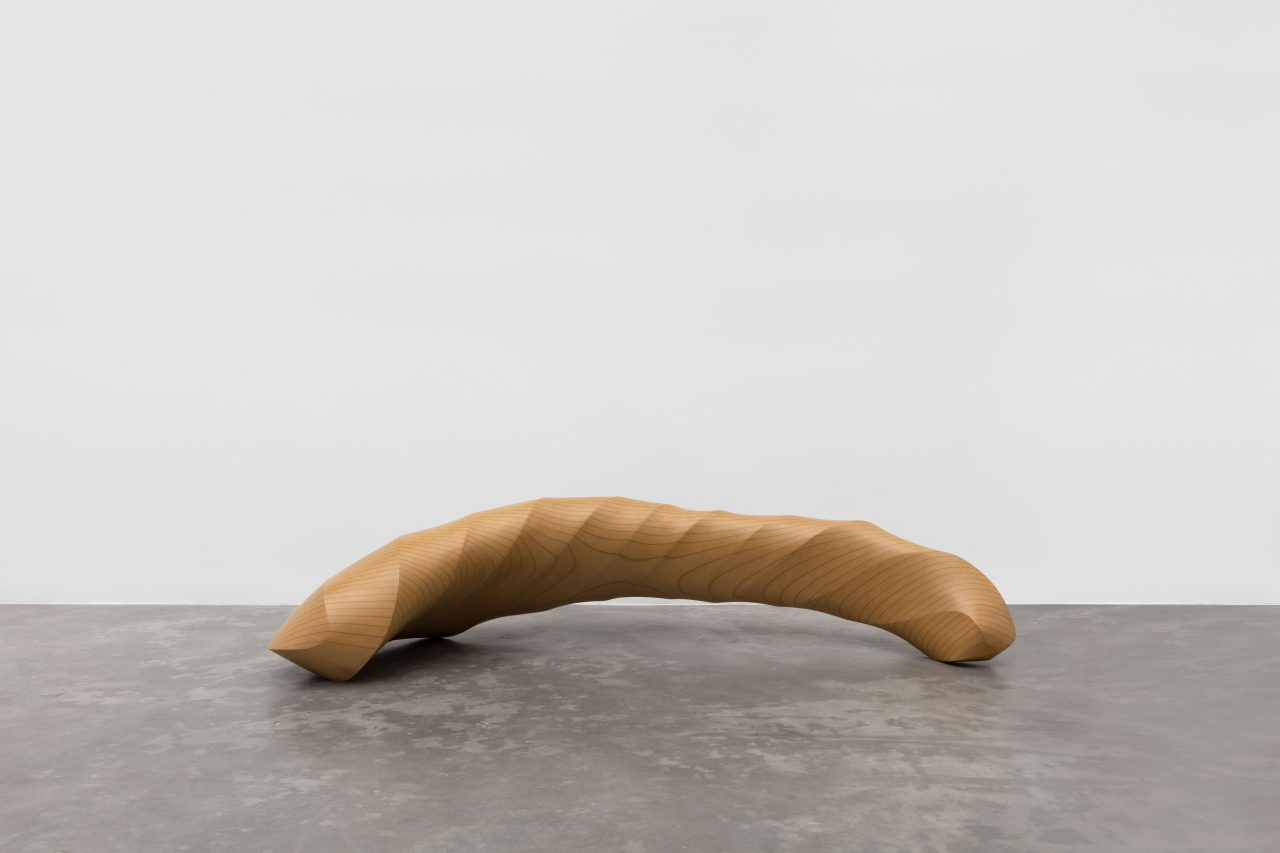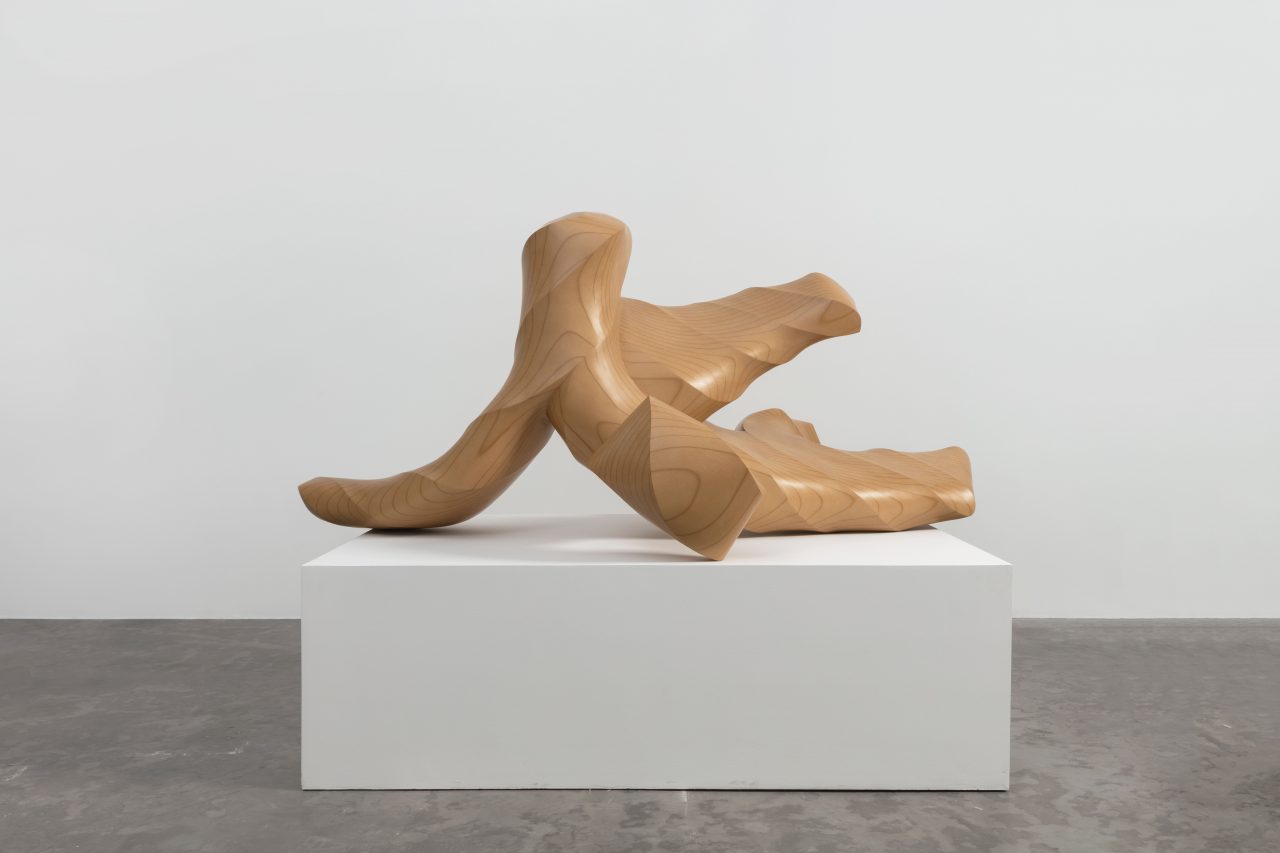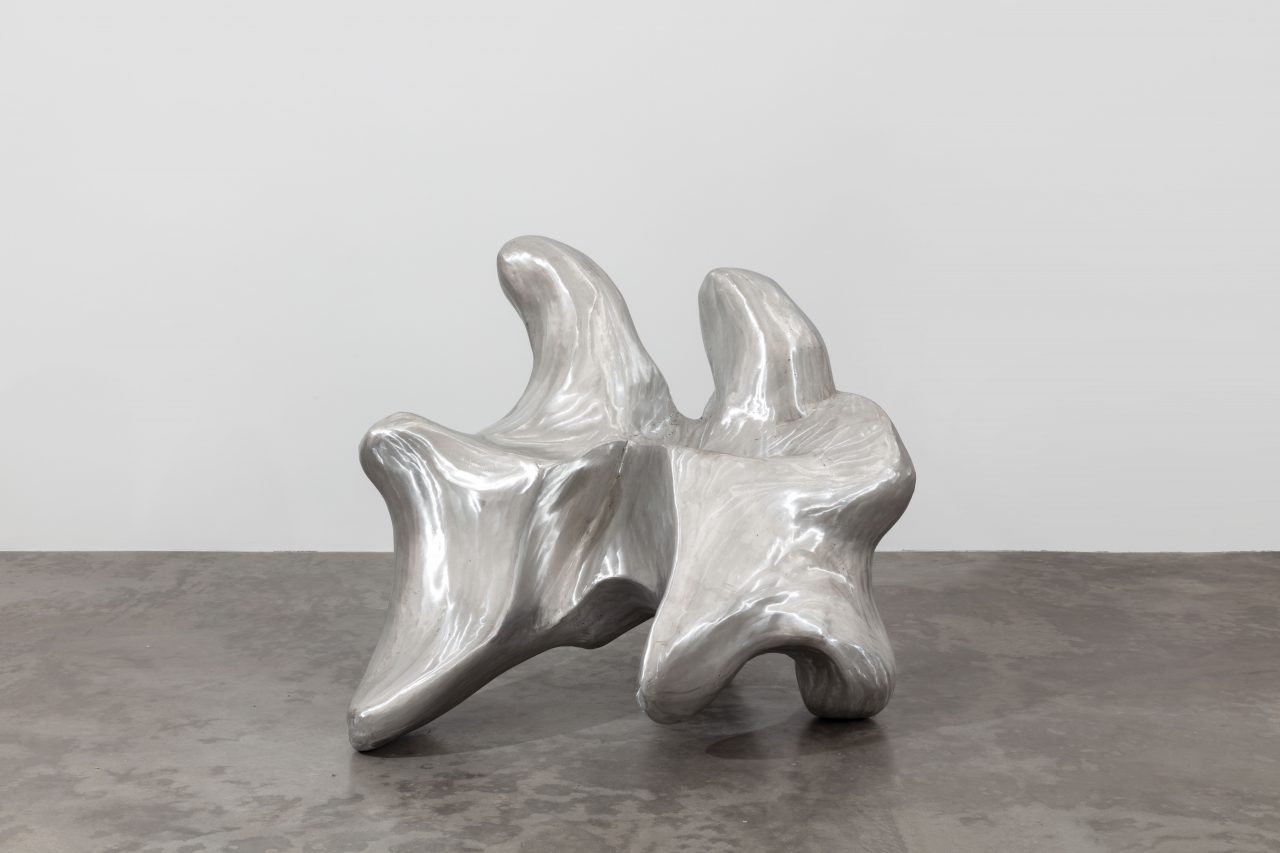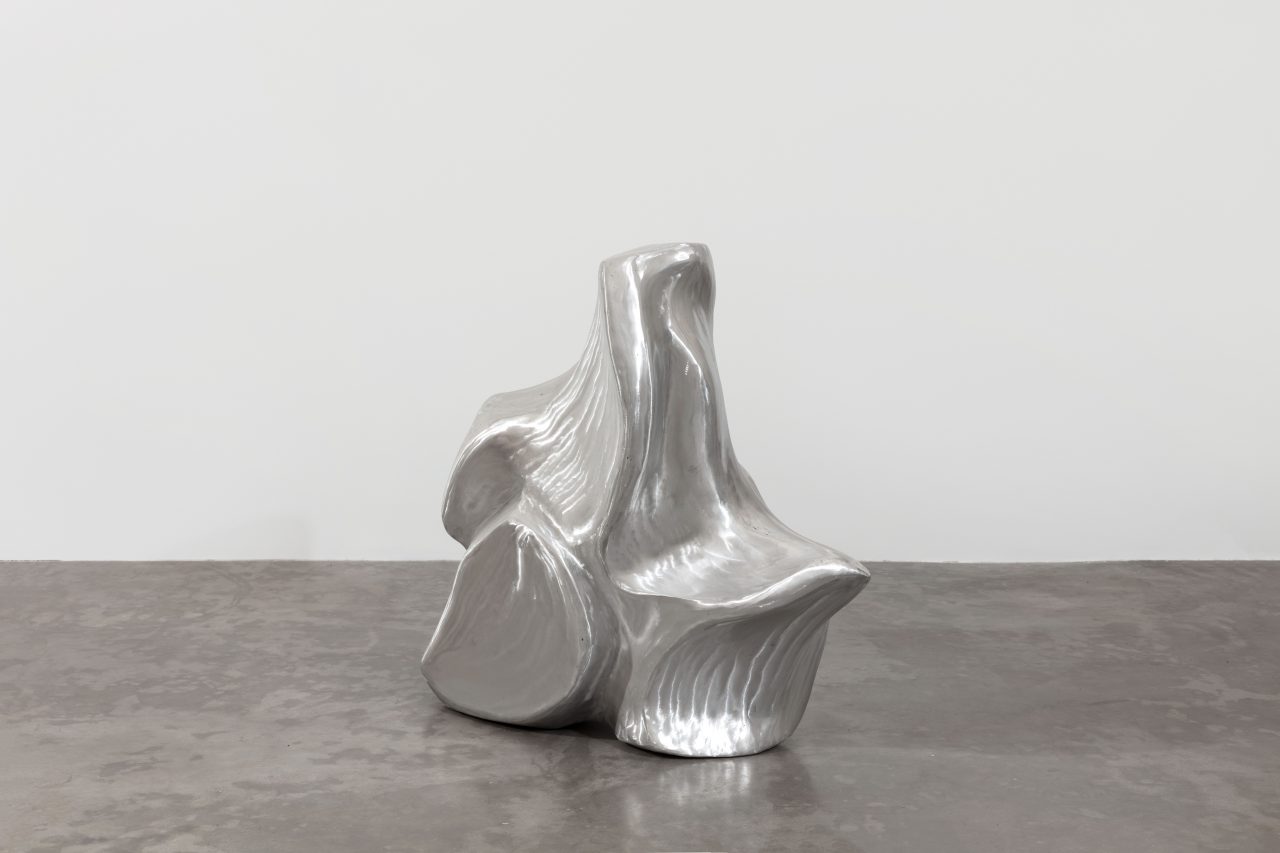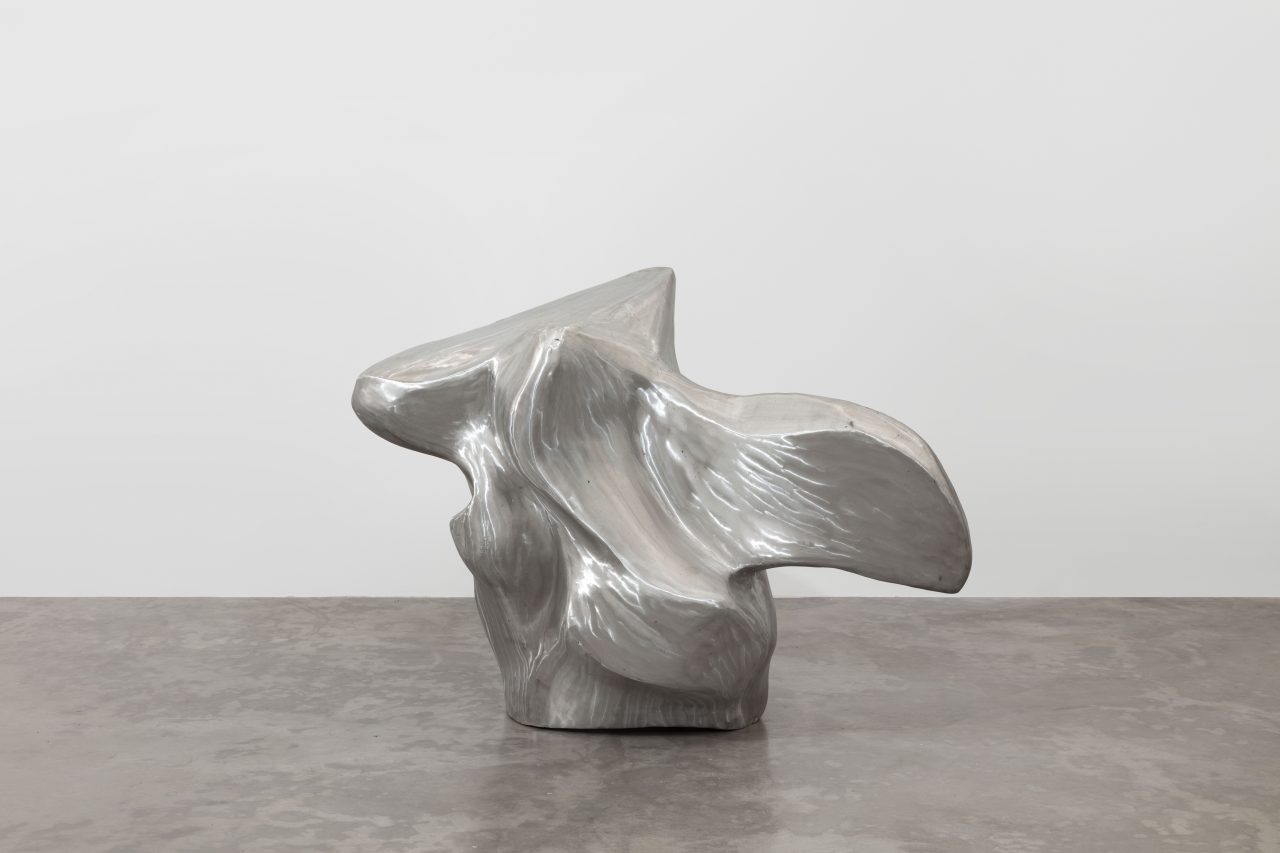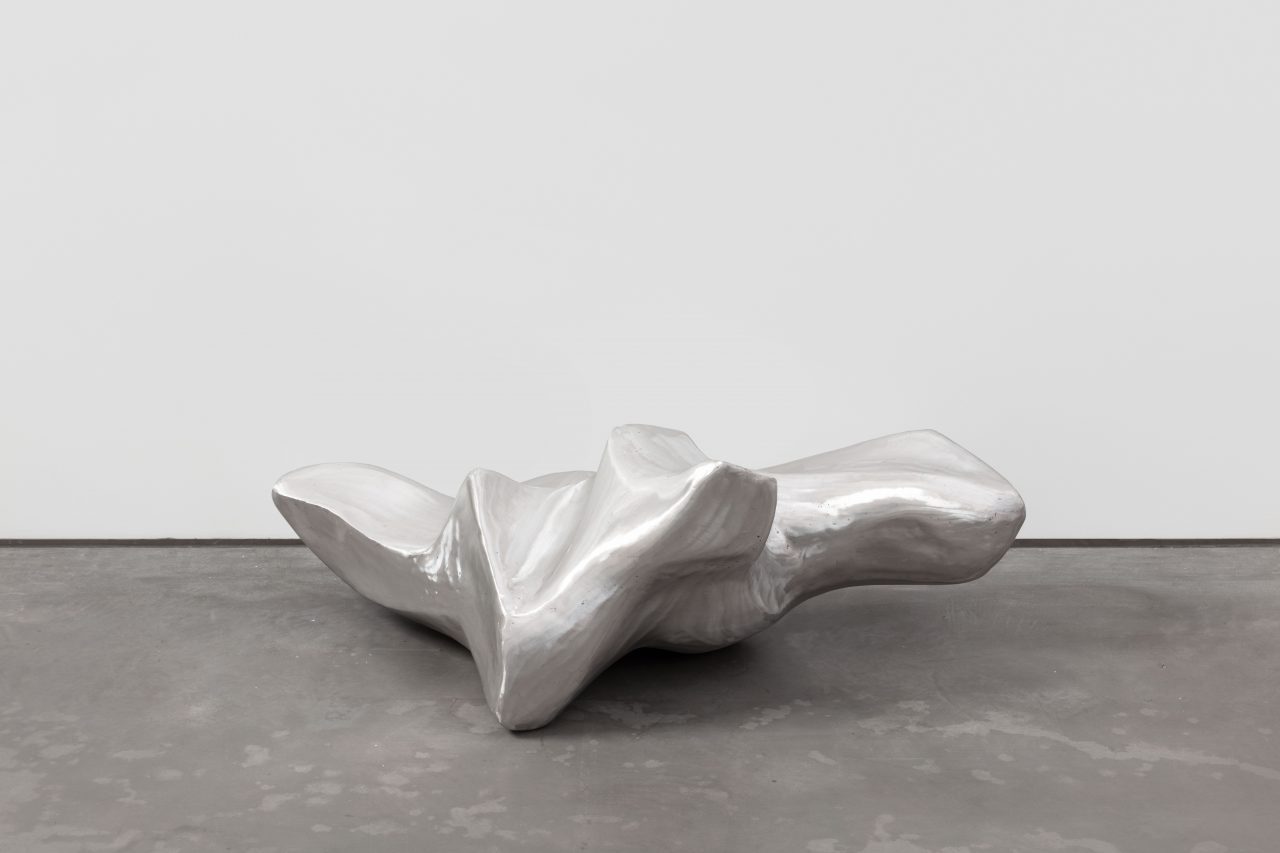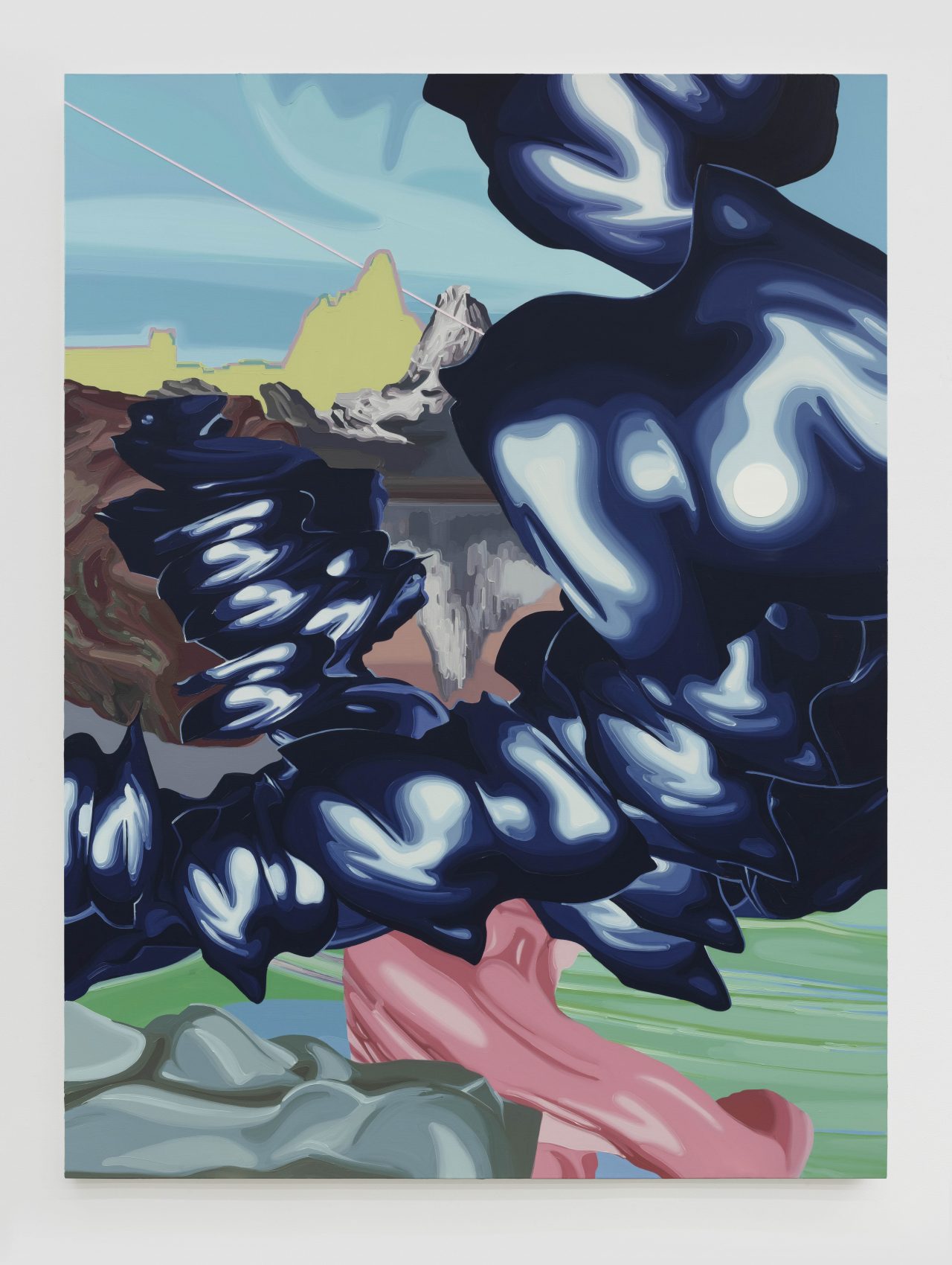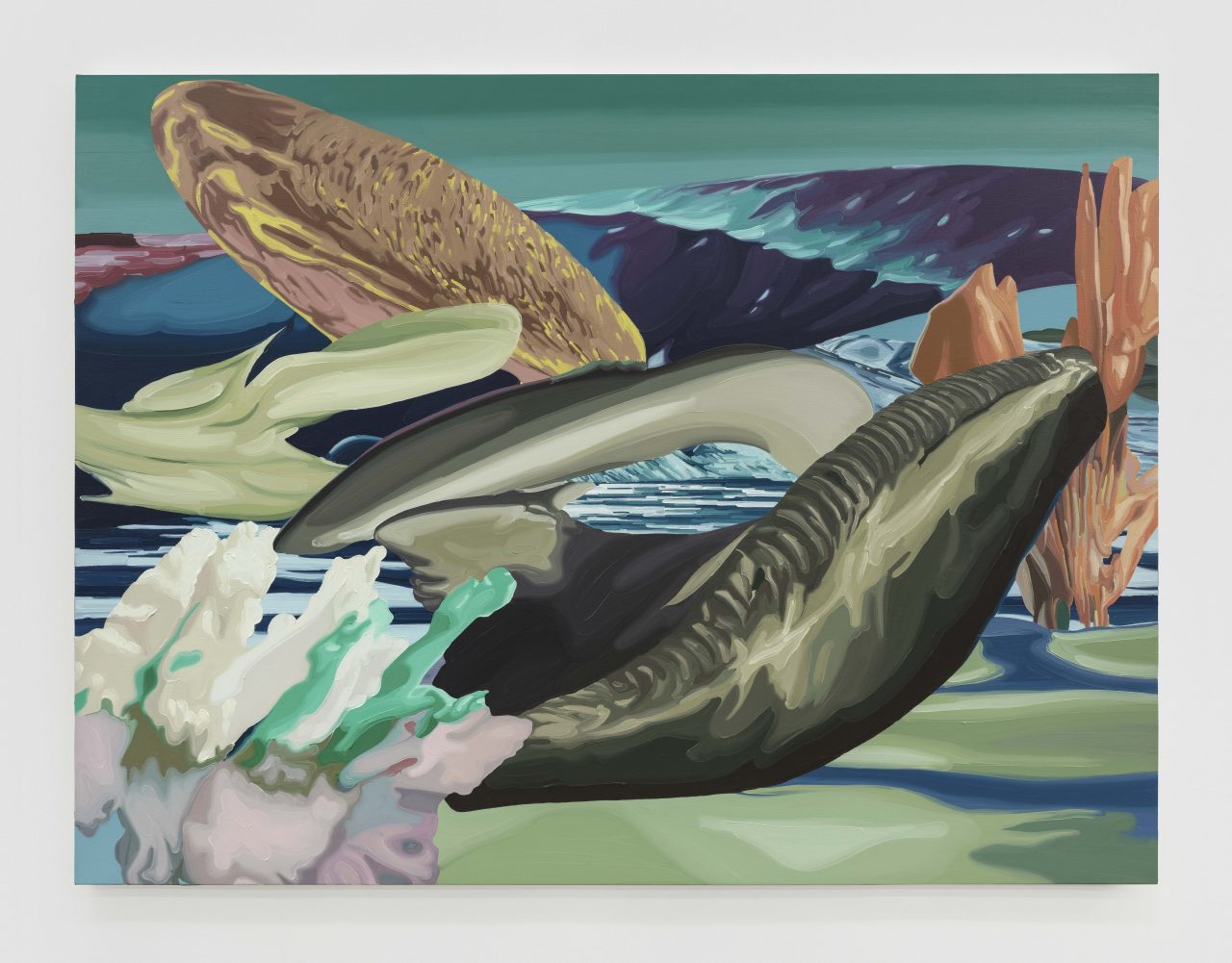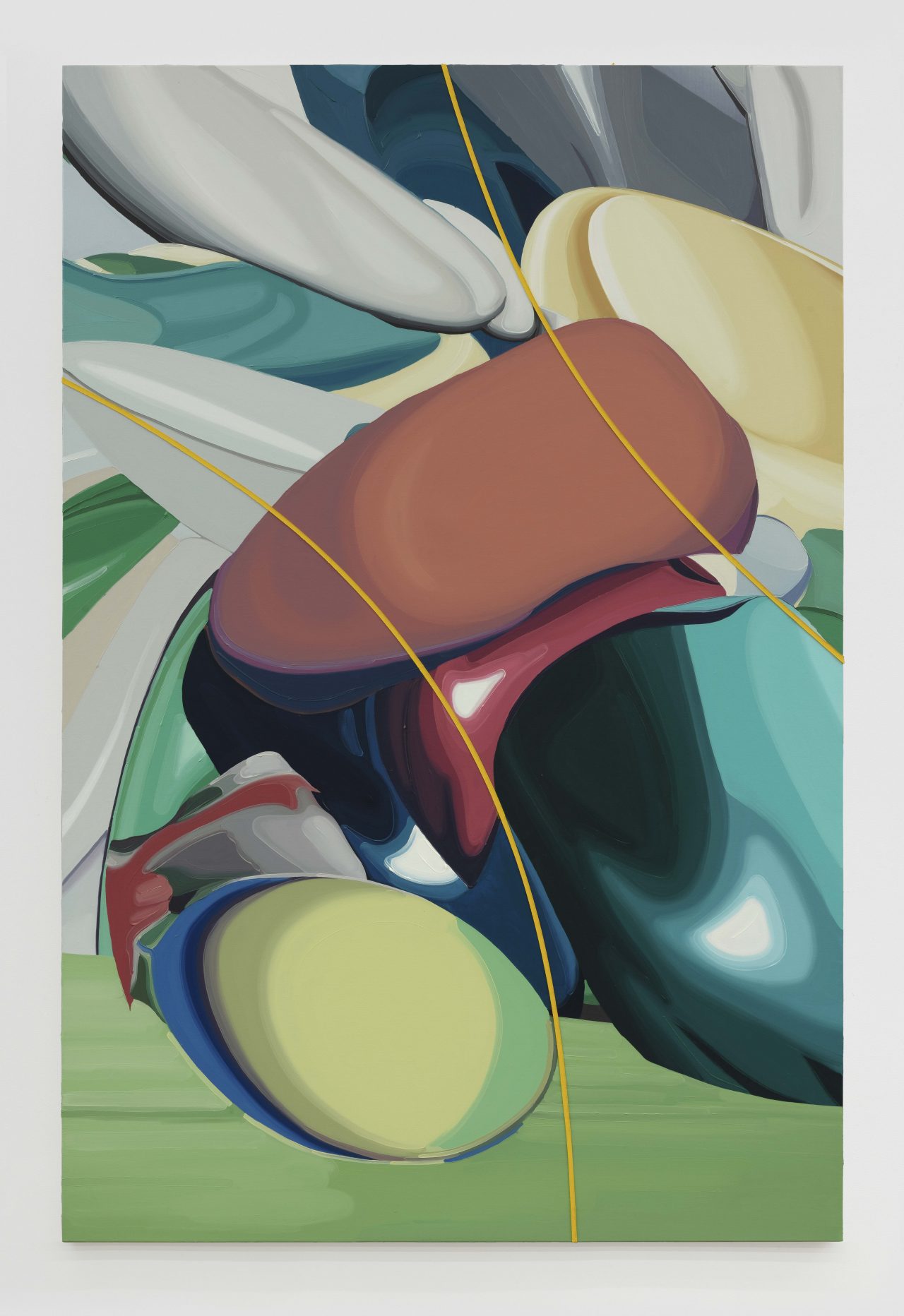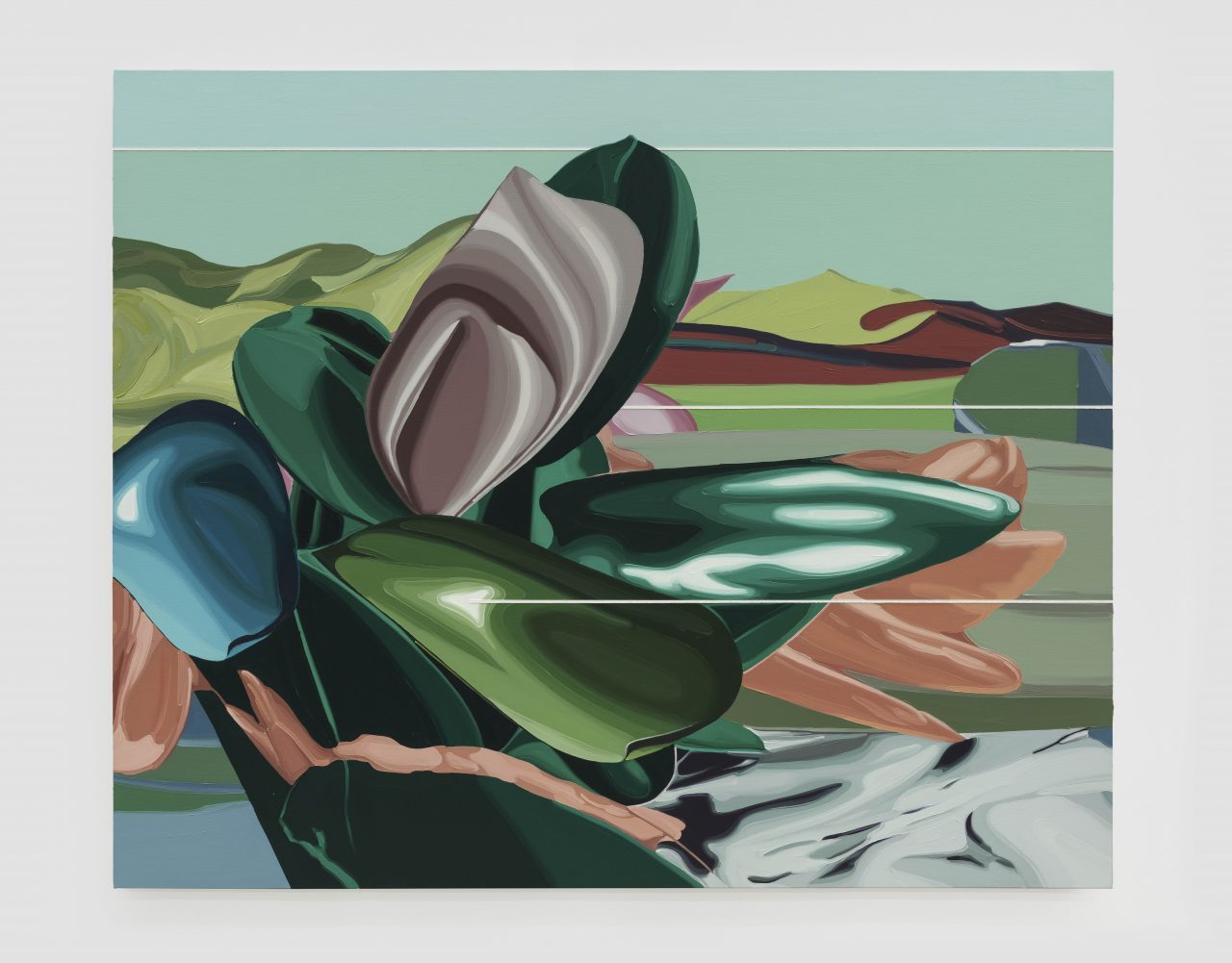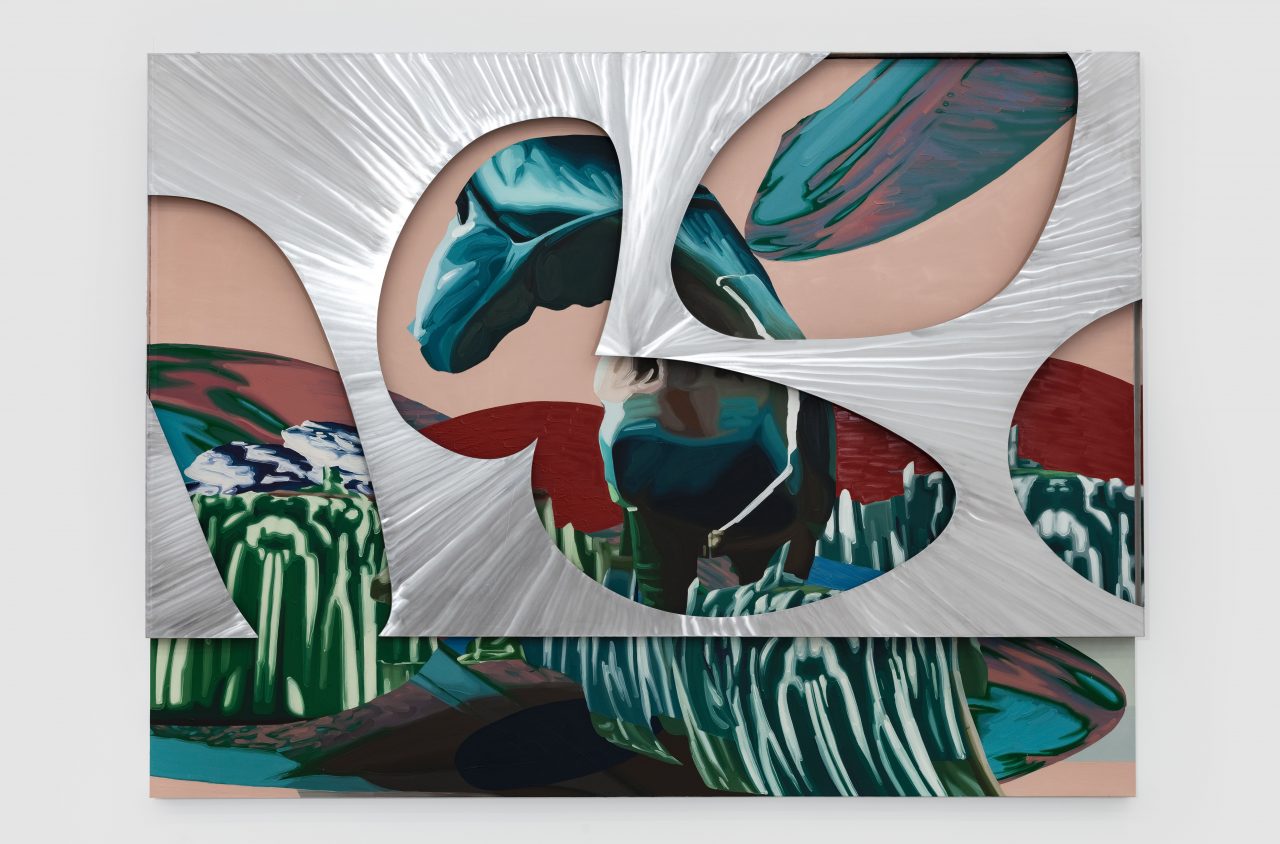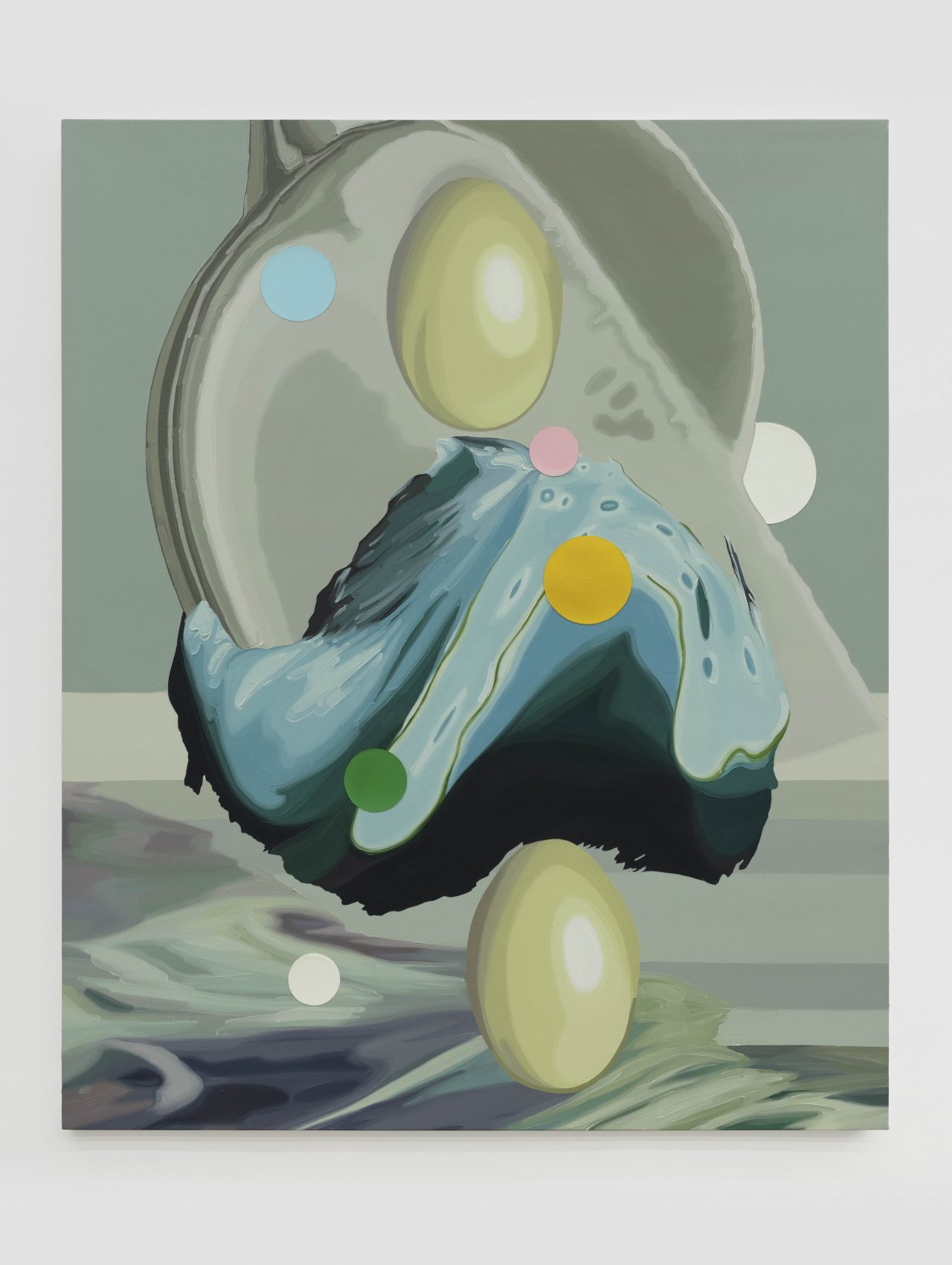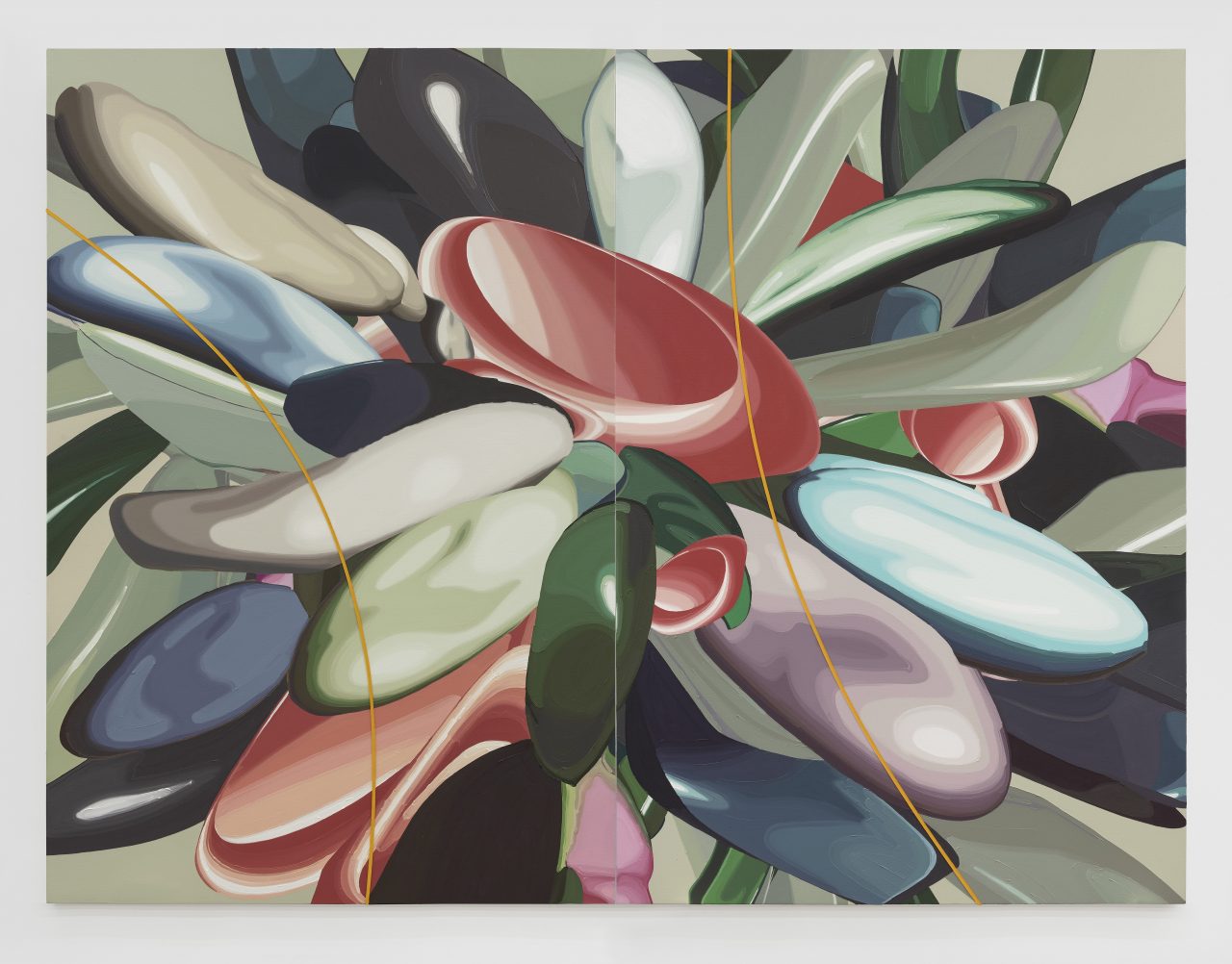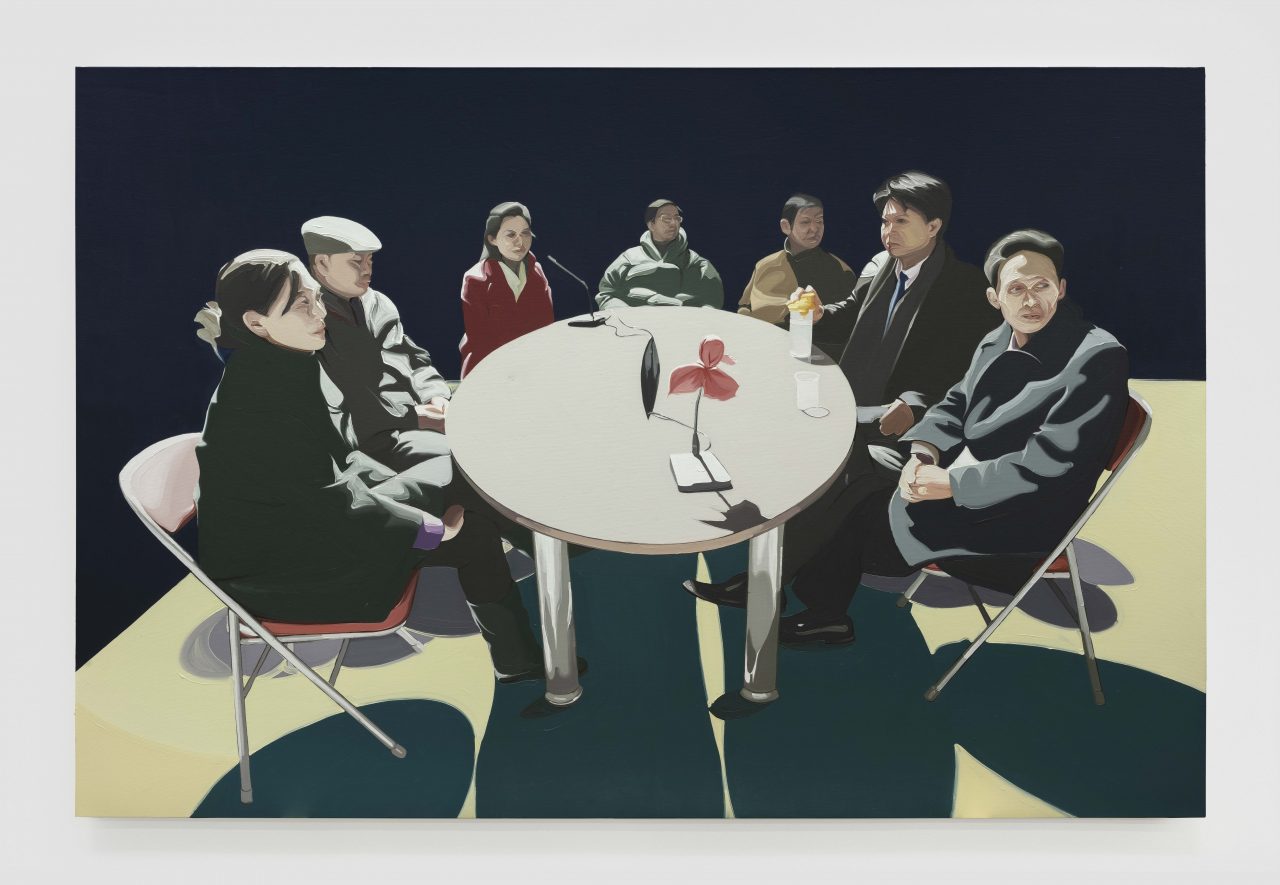Wang Jianwei: Always being, but not the whole
On March 20, 2021, Long March Space will present Always being, but not the whole, a new solo exhibition by Wang Jianwei, showcasing an installation of paintings and sculptures in the gallery space.
Based on the artist’s vision, the space will be turned into connecting passages and open spaces separated by walls of the same thickness with varying heights. The audience will be invited to enter this labyrinth, along the way encountering different artworks while also experiencing the relationships between the different works and between the works and the spaces that surround them.
The online viewing room will be launched from 20 March 18:00 to 31 March 18:00 (CST), 2021.

The isomorphism of knowledge and art has made Wang Jianwei no longer think that knowledge is a set of rigid rational constructions. Like art, it is also sensible, a conscious practice with self-reflection and questioning. Of course, whether it is synchronic discourse, archeological mechanism, or symptomatic thinking, Wang Jianwei does not deny the influence of Foucault and Althusser on him at this time. But it needs to be reiterated that all artistic practice is not the result of theoretical visualization, rather it provides us with a perspective and path to re-examine art and knowledge.
———Lu Mingjun,Rehearsal and Form: Politics towards Time,2014
Through his sculptures and paintings, Wang makes objects as he understands them, at an object-oriented horizon arising from a different cognitive and perceptual standpoint. These objects have unknown origins, unknown functions, unknown purposes, and unknown properties. The objects in what we call sculptures display the fluid forms and the shifting relations between the whole and the parts — and between the different parts themselves — as well as the amorphous relationship between objects and their surrounding spaces. The objects in the paintings, on the other hand, declare the unclear materials, structures, and unclear relations as revealed in the sculptures. All these unknown objects seem to follow the biological theory of “symbiotic evolution,” manifesting what’s been concealed (or withdrawn) within the cognitive framework of “correlationism” in the realism, through the apparent ambiguity of the obvious.
The artist’s work at this stage, however, is not so much to “unveil,” but rather to see the reorganization of withdrawal as a point of departure. In reality, Object-Oriented Ontology calls for the intrinsic value of an object, not the relations between objects or their symbolic meanings. It means that a thing is no longer defined by a single meaning, instead, it is filled with all kinds of potentials. This leads to Always being, but not the whole.
Wang Jianwei is known for continuously integrating his philosophical studies and reflections into his creative practice. His artistic career has been an ongoing process of self-invention through self-negation: from making realistic oil paintings in the early 1980s, to studying cybernetics and social spaces in the 1990s, to experimenting with a large quantity of video and theatrical productions. This fruitful and ceaseless journey of change and growth demonstrates how the artist, by erasing existing boundaries through his rigorous intellectual labor, obtains freedom. This space of freedom is not so much what he has earned, but rather what he has created — because it never before existed.
One has to pass the existing regime of visibility and its „phantom objectivity“, which is a term George Lukasz has used to characterise capitalist culture (and consequently its rule of organising „visibility“). „Phantom objectivity“ is an effect through which social relations get masked as facts, first and foremost in the form of products (that is, commodity fetishism), yet increasingly this is relevant to all other spheres of life. The masking of social relations as facts has also been described as „naturalisation“, as the presentation of those facts as natural and the forces that bring them into being as nature.
It is this wall of „phantom objectivity“ which we have to pass in order to enter the possibility to seeing the spaces it creates – as social spaces. This is what Wang Jianwei’s work is about. There is nothing Platonian in his work, which is a way of thinking alien to Chinese society, namely that behind the smokescreen of appearances there is a truer, more pure realm of the real. Passing through „phantom objectivity“ means to resist surrendering to the media effects, to the organisation of desire by the current regime of visibility, not to pass to a truer truth. It means to give things their character back as being socially produced – which is the condition to aquire agency, the condition for social change.
———Anselm Franke,The Ghosts crossing the Smokescreen--On the position of Wang Jianwei’s work in an emerging debate
Also on view in the Long March Space’s Artist Room will be The Microphone is Broken Again, a group portrait Wang Jianwei painted.
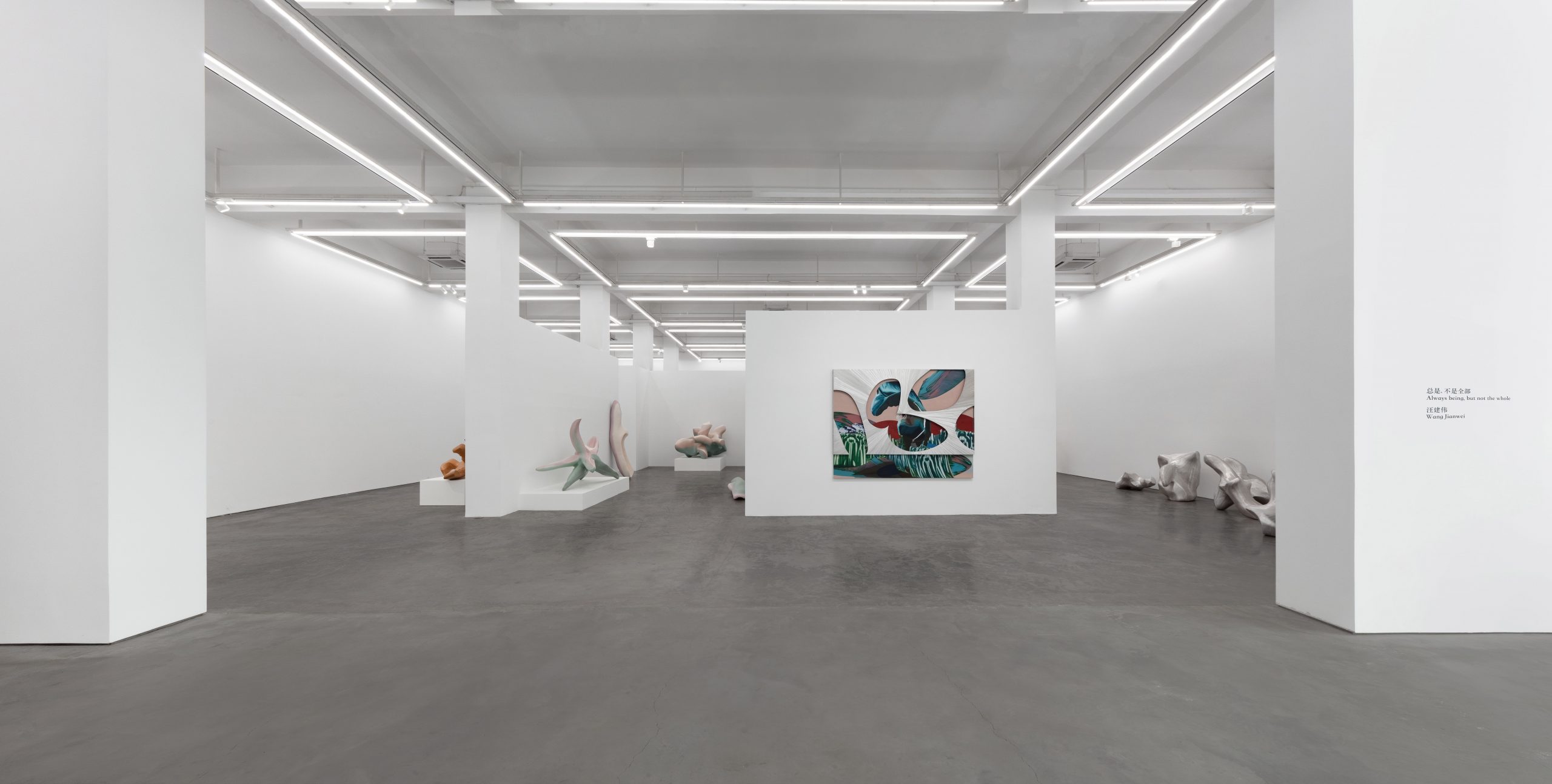
Exhibition photo
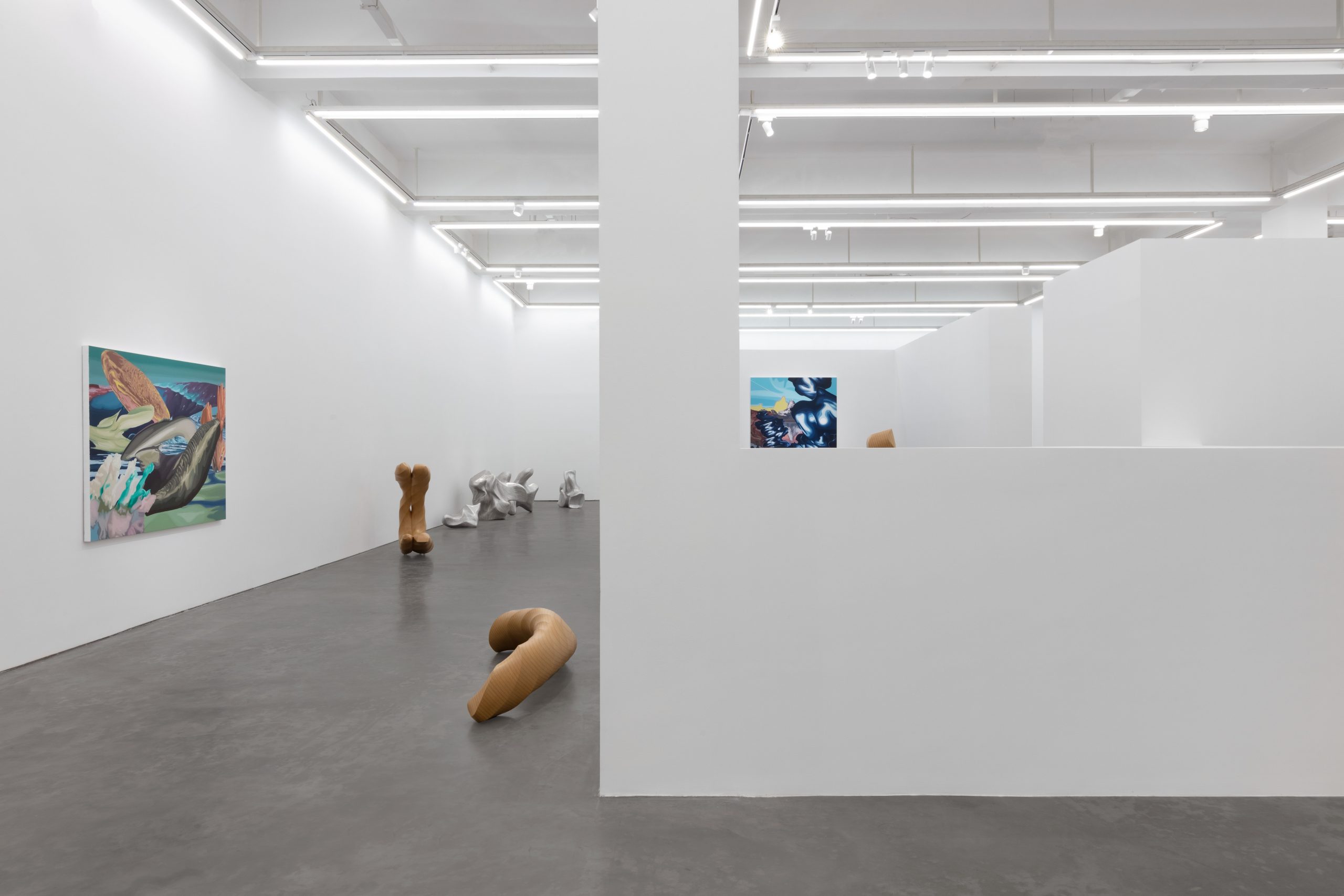
Exhibition photo
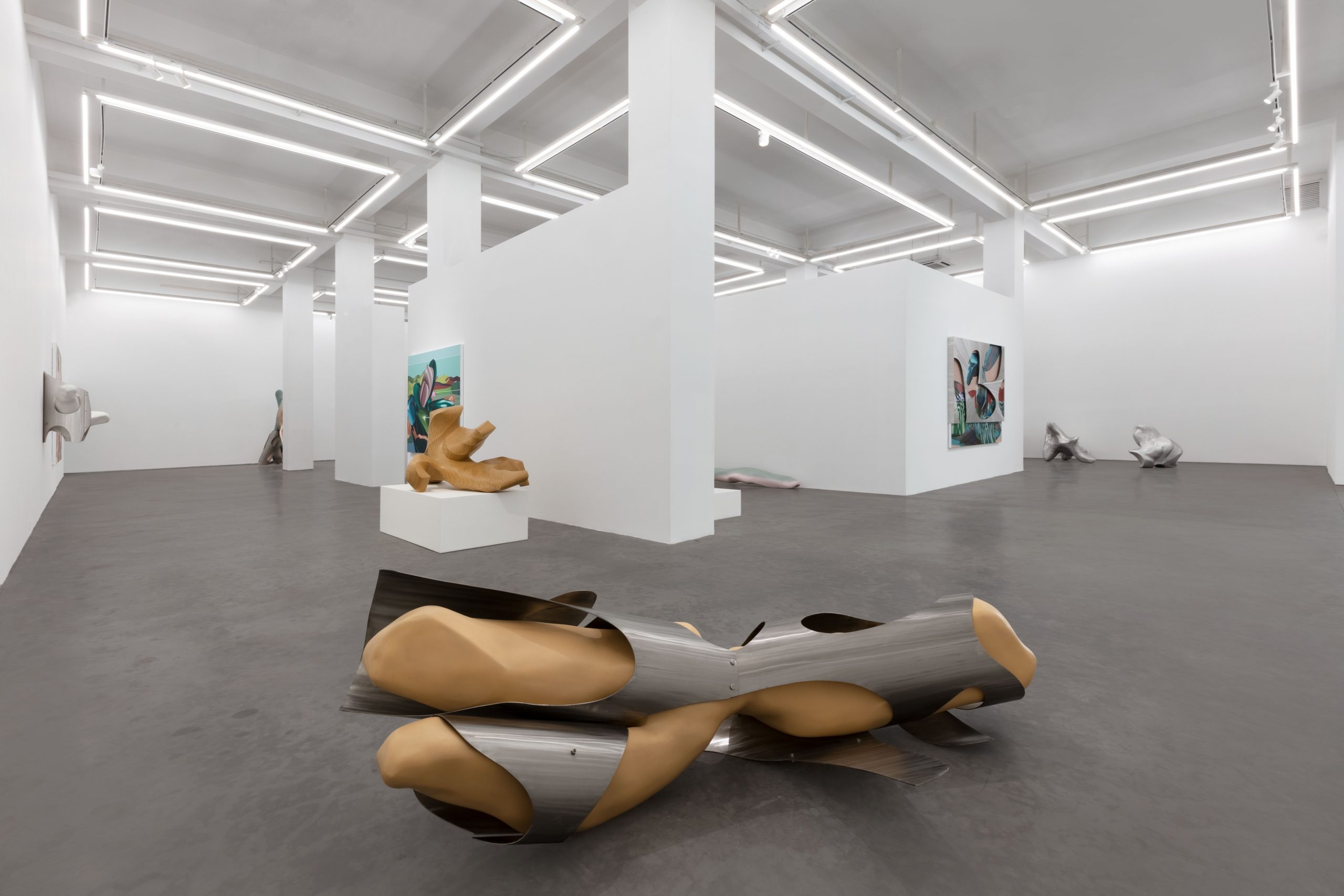
Exhibition photo
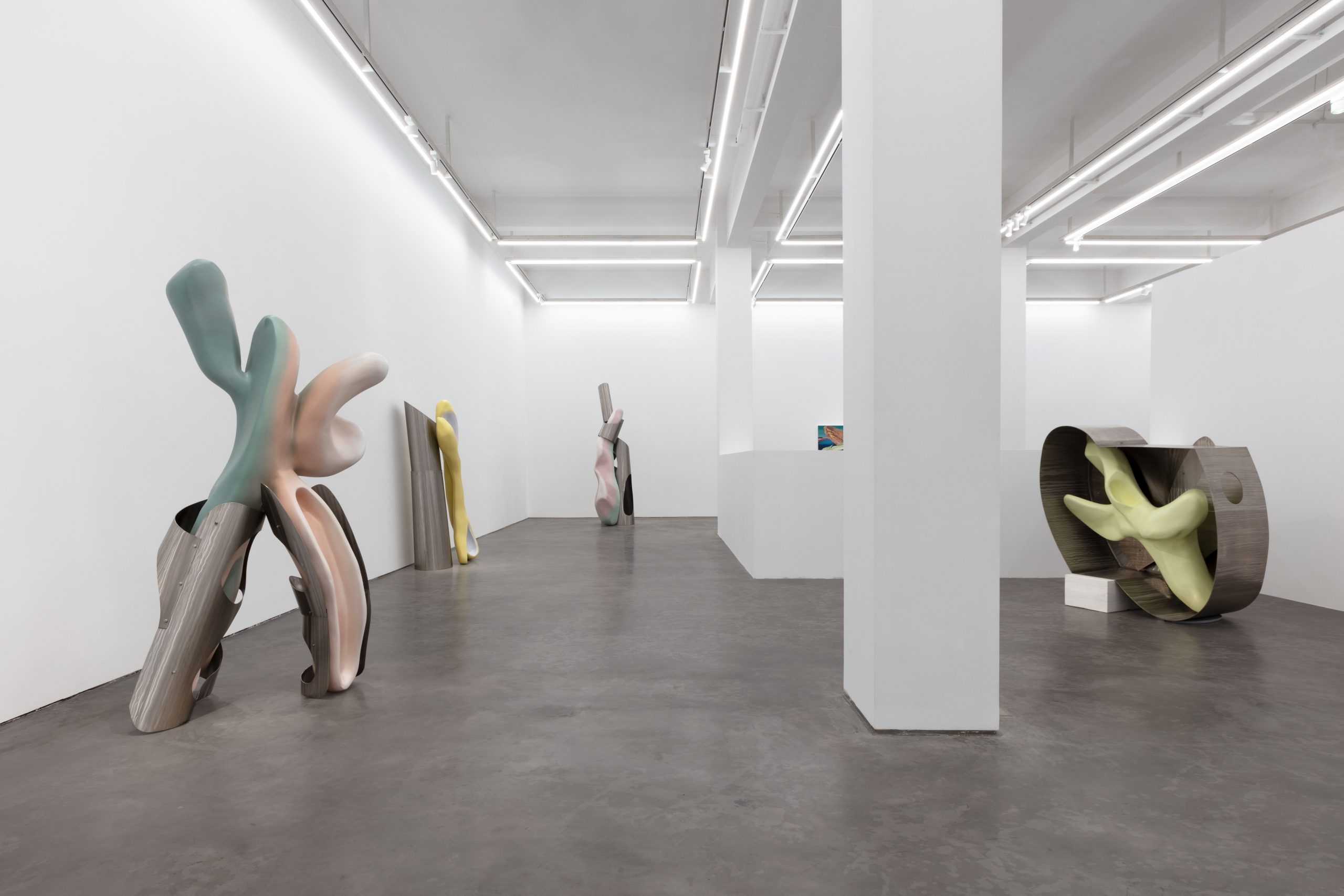
Exhibition photo
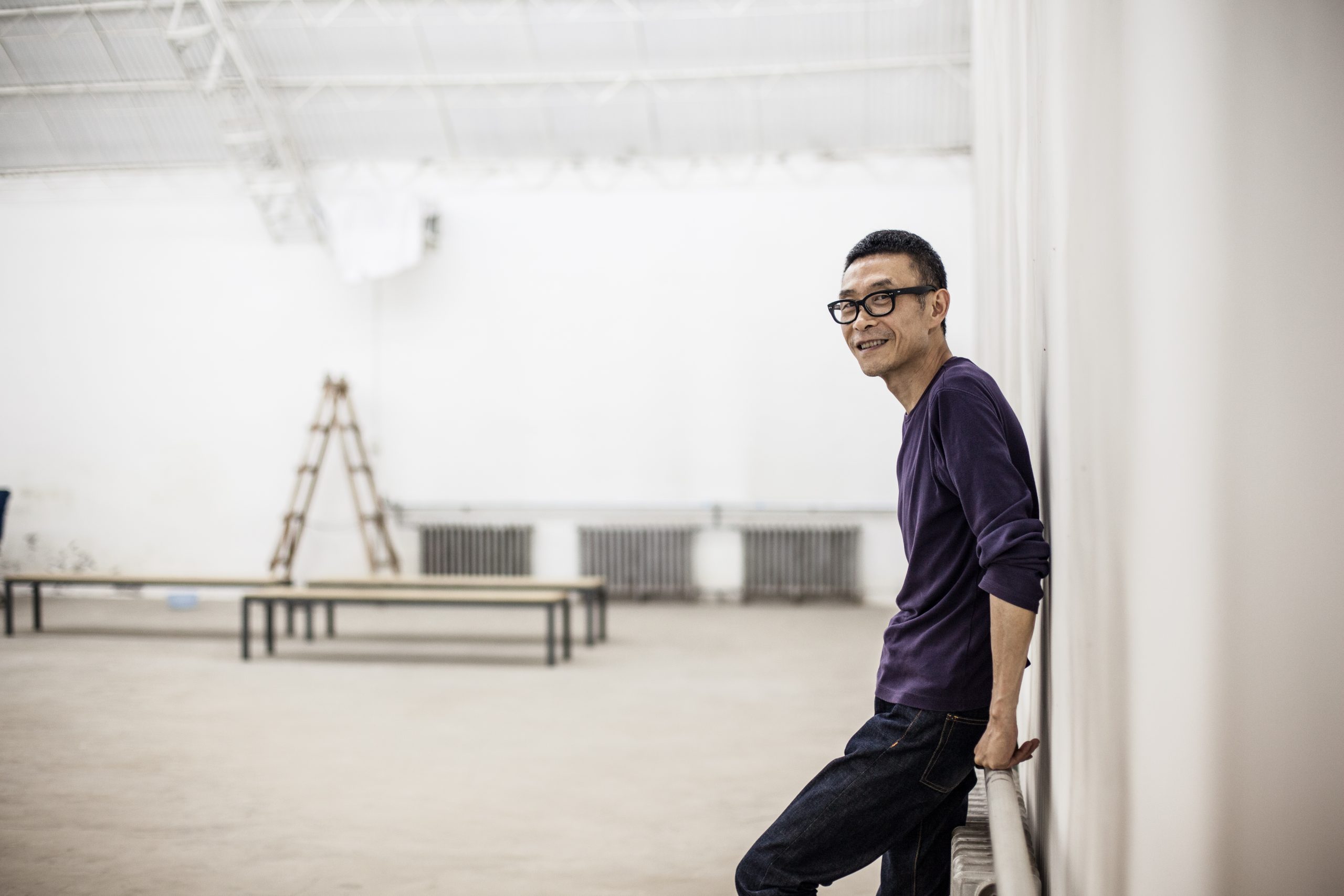
Wang Jianwei was born in 1958 in Sichuan province. His artistic practice began in the 1970s, and he is seen as a pioneer in China's contemporary art scene. As a student of painting at the Zhejiang Academy of Fine Arts (now the China Academy of Fine Arts), Wang Jianwei read deeply into works of existentialist philosophy and Chinese history. These experiences had a profound effect on him and led his early paintings to be infused with complex and strongly experimental concepts.
From the 1990s up until the present day, Wang Jianwei has probed deeply into the influence of interdisciplinary knowledge composites on the world of contemporary art. This began as an attempt to try and create a new artistic language by means of disparate disciplines, which start from creating a new possibility of the subject from an intellectual level. Being placed behind the intellectual composites and philosophical interrogations, a multi-disciplinary means of viewing the world is thereby realized and the form to this practice is given. Therefore, his works are multiform artworks that transcend cinema, multi-media art, installation, painting and literature.
Wang Jianwei has shown extensively both within China and internationally. Over the years his work has been exhibited in leading international art events such as (Documenta, Venice Biennale, Gwangju Biennale and Sao Paulo Biennale). He also participated in critically acclaimed group exhibition such as; ‘Cities on the Move’, ‘China Now’ at the Museum of Modern Art, New York City, and ‘China Power Station (Part 3)’. Solo exhibitions of the artist have been held at various renowned institutions including Walker Art Centre, USA, Today Art Center, Beijing, Zendai Museum of Modern Art, Shanghai, and Asia-Australia Arts Center, Sydney.
Image courtesy of the artist
Wang Jianwei: Always being, but not the whole
On March 20, 2021, Long March Space will present Always being, but not the whole, a new solo exhibition by Wang Jianwei, showcasing an installation of paintings and sculptures in the gallery space.
Based on the artist’s vision, the space will be turned into connecting passages and open spaces separated by walls of the same thickness with varying heights. The audience will be invited to enter this labyrinth, along the way encountering different artworks while also experiencing the relationships between the different works and between the works and the spaces that surround them.
The online viewing room will be launched from 20 March 18:00 to 31 March 18:00 (CST), 2021.

This new series of works showcase the artist’s contemplations and artistic practice since he began to focus on Speculative Realism and Object-Oriented Ontology in the recent years. This philosophical and ideological turn shatters the worldview — often seen in realism — that sees human as subject and subverts one’s understanding of human–object and object–object relations, and challenges one’s point of view by positioning objects on an equal plane. Through his works, Wang has undoubtedly revealed a new expression of how objects and the world may be portrayed.
Art may be a kind of knowledge, an attitude or a function. As knowledge, art is the same as other knowledge and guides various practices; as an attitude, it symbolizes the relationship between human beings and the world. Nature and the environment can be changed by individuals; as a function, It has achieved remarkable results in diversification and development methods.
———Interview between Huang Fu Binghui and Wang Jianwei,2004
The isomorphism of knowledge and art has made Wang Jianwei no longer think that knowledge is a set of rigid rational constructions. Like art, it is also sensible, a conscious practice with self-reflection and questioning. Of course, whether it is synchronic discourse, archeological mechanism, or symptomatic thinking, Wang Jianwei does not deny the influence of Foucault and Althusser on him at this time. But it needs to be reiterated that all artistic practice is not the result of theoretical visualization, rather it provides us with a perspective and path to re-examine art and knowledge.
———Lu Mingjun,Rehearsal and Form: Politics towards Time,2014
Wang Jianwei once talked about knowledge and art between the world, he had said that, "literally, it is difficult for us to understand an unrelated world, as if any richness, complexity, and possibility are based on relationships, but it is true that the world is not as rich as we imagined, or the relationship between them is more than What do we imagine richer? As a result, we often fall into an indescribable predicament, unable to capture them with existing knowledge. When more and more relationships surround those objects, the objects have already retreated. Therefore, the cause and the result can never be mutually proved (except Perjury), an art object, or more accurately a technological object that grows in time, should always be larger than our pre-predictions, or outside of our knowledge?"
———Wang Jianwei,Cambrian,2018
Through his sculptures and paintings, Wang makes objects as he understands them, at an object-oriented horizon arising from a different cognitive and perceptual standpoint. These objects have unknown origins, unknown functions, unknown purposes, and unknown properties. The objects in what we call sculptures display the fluid forms and the shifting relations between the whole and the parts — and between the different parts themselves — as well as the amorphous relationship between objects and their surrounding spaces. The objects in the paintings, on the other hand, declare the unclear materials, structures, and unclear relations as revealed in the sculptures. All these unknown objects seem to follow the biological theory of “symbiotic evolution,” manifesting what’s been concealed (or withdrawn) within the cognitive framework of “correlationism” in the realism, through the apparent ambiguity of the obvious.
The artist’s work at this stage, however, is not so much to “unveil,” but rather to see the reorganization of withdrawal as a point of departure. In reality, Object-Oriented Ontology calls for the intrinsic value of an object, not the relations between objects or their symbolic meanings. It means that a thing is no longer defined by a single meaning, instead, it is filled with all kinds of potentials. This leads to Always being, but not the whole.
Wang Jianwei is known for continuously integrating his philosophical studies and reflections into his creative practice. His artistic career has been an ongoing process of self-invention through self-negation: from making realistic oil paintings in the early 1980s, to studying cybernetics and social spaces in the 1990s, to experimenting with a large quantity of video and theatrical productions. This fruitful and ceaseless journey of change and growth demonstrates how the artist, by erasing existing boundaries through his rigorous intellectual labor, obtains freedom. This space of freedom is not so much what he has earned, but rather what he has created — because it never before existed.
"My first video work was made in 1995. It was an installation video with a screen, a monitor, and activities. This is the way I always create video works before 1996. In 1996, I made my first independent video work called "Production". I chose seven different cities, and in each city, I chose a public place and a collection area, which became the theme of each unit in the entire video work."
———Wang Jianwei,Production,60-minute video,The Tenth Documenta,Kassel,Germany,1997
"When making these works, I don't think of myself as an artist, I believe I may be someone else or something. In these images, I am an observer, in a sociological way, just like what I use in the theater. I am not interested in whether my work can be called an artist, but I always present it in an experimental form."
———Wang Jianwei,Production,60-minute video,The Tenth Documenta,Kassel,Germany,1997
One has to pass the existing regime of visibility and its “phantom objectivity”, which is a term George Lukasz has used to characterize capitalist culture (and consequently its rule of organizing “visibility”). “Phantom objectivity” is an effect through which social relations get masked as facts, first and foremost in the form of products (that is, commodity fetishism), yet increasingly this is relevant to all other spheres of life. The masking of social relations as facts has also been described as “naturalization”, as the presentation of those facts as natural and the forces that bring them into being as nature.
It is this wall of “phantom objectivity” which we have to pass in order to enter the possibility to seeing the spaces it creates – as social spaces. This is what Wang Jianwei’s work is about. There is nothing Platonian in his work, which is a way of thinking alien to Chinese society, namely that behind the smokescreen of appearances there is a truer, more pure realm of the real. Passing through “phantom objectivity” means to resist surrendering to the media effects, to the organization of desire by the current regime of visibility, not to pass to a truer truth. It means to give things their character back as being socially produced – which is the condition to acquire agency, the condition for social change.
———Anselm Franke,The Ghosts crossing the Smokescreen--On the position of Wang Jianwei’s work in an emerging debate
In a certain sense, Wang Jianwei's personal development is a portrayal of the transformation of Chinese art in the general direction, from social realism to concise humanism, and finally to a complex, mature but extremely localized conceptual art. In the most vivid words, Wang Jianwei walked from the easel into the laboratory and produced a series of works claiming that art is a kind of experimental knowledge. In Wang's view, such a process is simply because he saw that easel painting is closed and limited. After seeing other (expression) techniques of contemporary art, he resolutely decided to go out of the previous limitations. In his works, there is a deep understanding and thinking about the strong independence of the various cultures, concepts and moral conflicts behind the daily life of contemporary society.
———Wang Jianwei, don't take the usual path,by Long March Space
Also on view in the Long March Space’s Artist Room will be The Microphone is Broken Again, a group portrait Wang Jianwei painted.

Exhibition photo

Exhibition photo

Exhibition photo

Exhibition photo

Image courtesy of the artist
Wang Jianwei was born in 1958 in Sichuan province. His artistic practice began in the 1970s, and he is seen as a pioneer in China's contemporary art scene. As a student of painting at the Zhejiang Academy of Fine Arts (now the China Academy of Fine Arts), Wang Jianwei read deeply into works of existentialist philosophy and Chinese history. These experiences had a profound effect on him and led his early paintings to be infused with complex and strongly experimental concepts.
From the 1990s up until the present day, Wang Jianwei has probed deeply into the influence of interdisciplinary knowledge composites on the world of contemporary art. This began as an attempt to try and create a new artistic language by means of disparate disciplines, which start from creating a new possibility of the subject from an intellectual level. Being placed behind the intellectual composites and philosophical interrogations, a multi-disciplinary means of viewing the world is thereby realized and the form to this practice is given. Therefore, his works are multiform artworks that transcend cinema, multi-media art, installation, painting and literature.
Wang Jianwei has shown extensively both within China and internationally. Over the years his work has been exhibited in leading international art events such as (Documenta, Venice Biennale, Gwangju Biennale and Sao Paulo Biennale). He also participated in critically acclaimed group exhibition such as; ‘Cities on the Move’, ‘China Now’ at the Museum of Modern Art, New York City, and ‘China Power Station (Part 3)’. Solo exhibitions of the artist have been held at various renowned institutions including Walker Art Centre, USA, Today Art Center, Beijing, Zendai Museum of Modern Art, Shanghai, and Asia-Australia Arts Center, Sydney.

